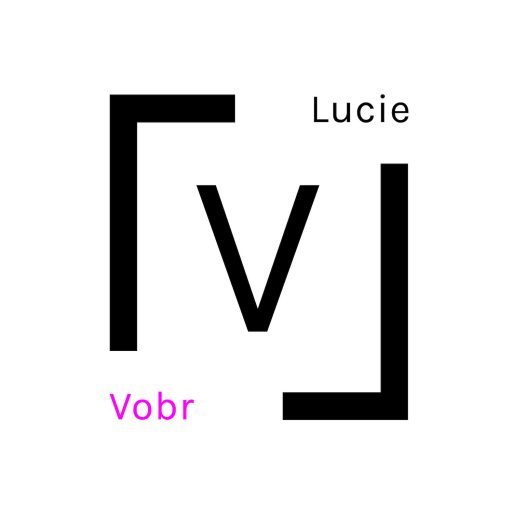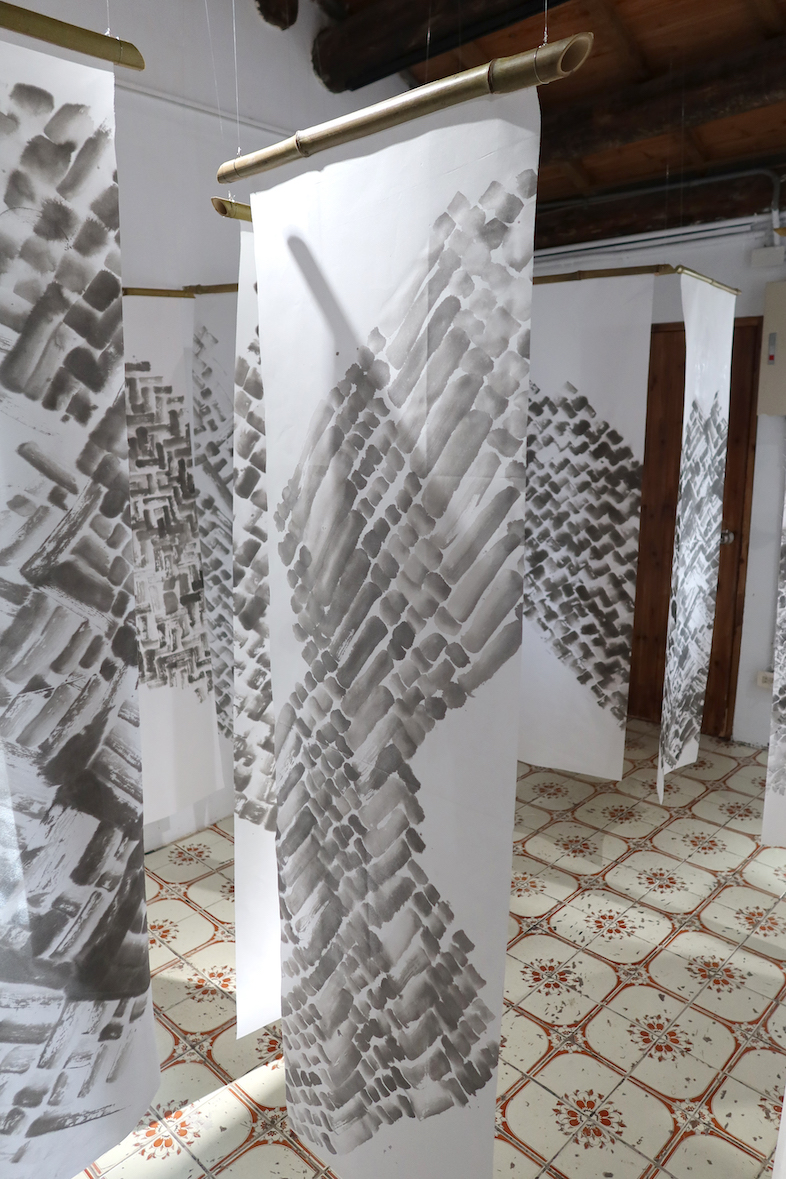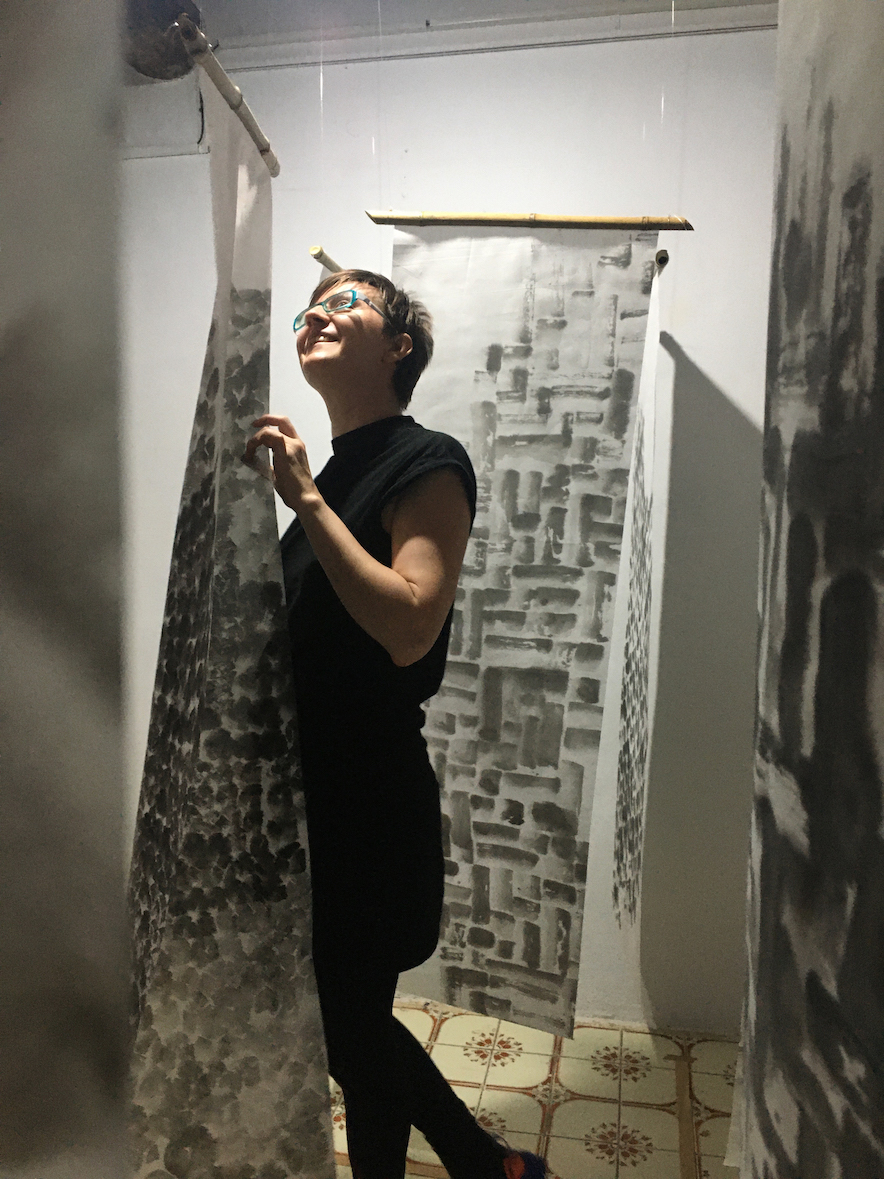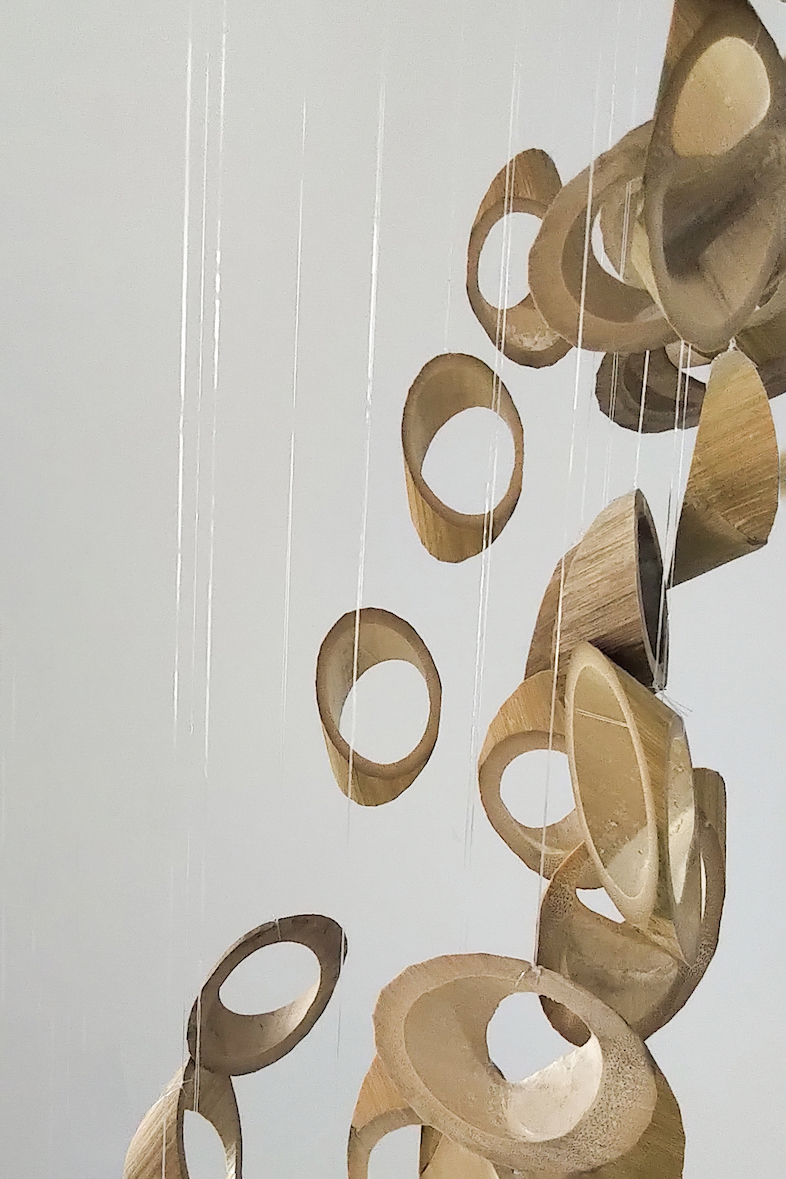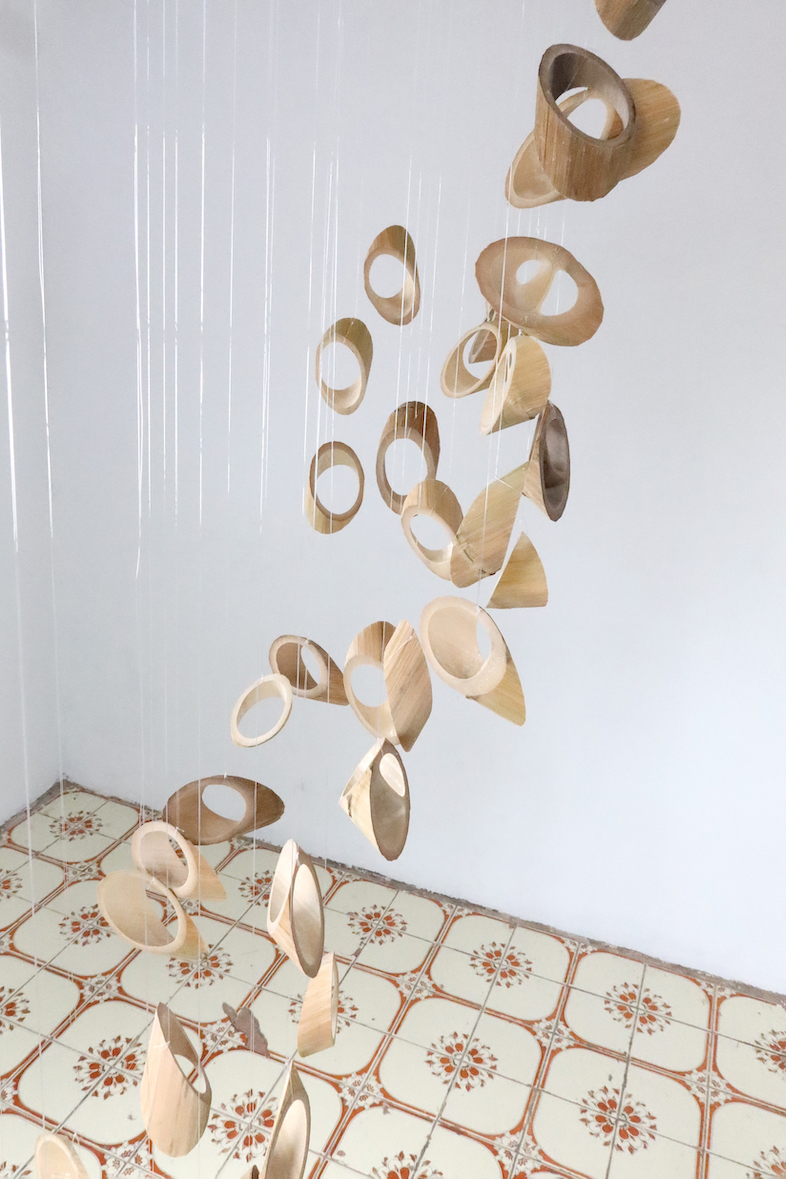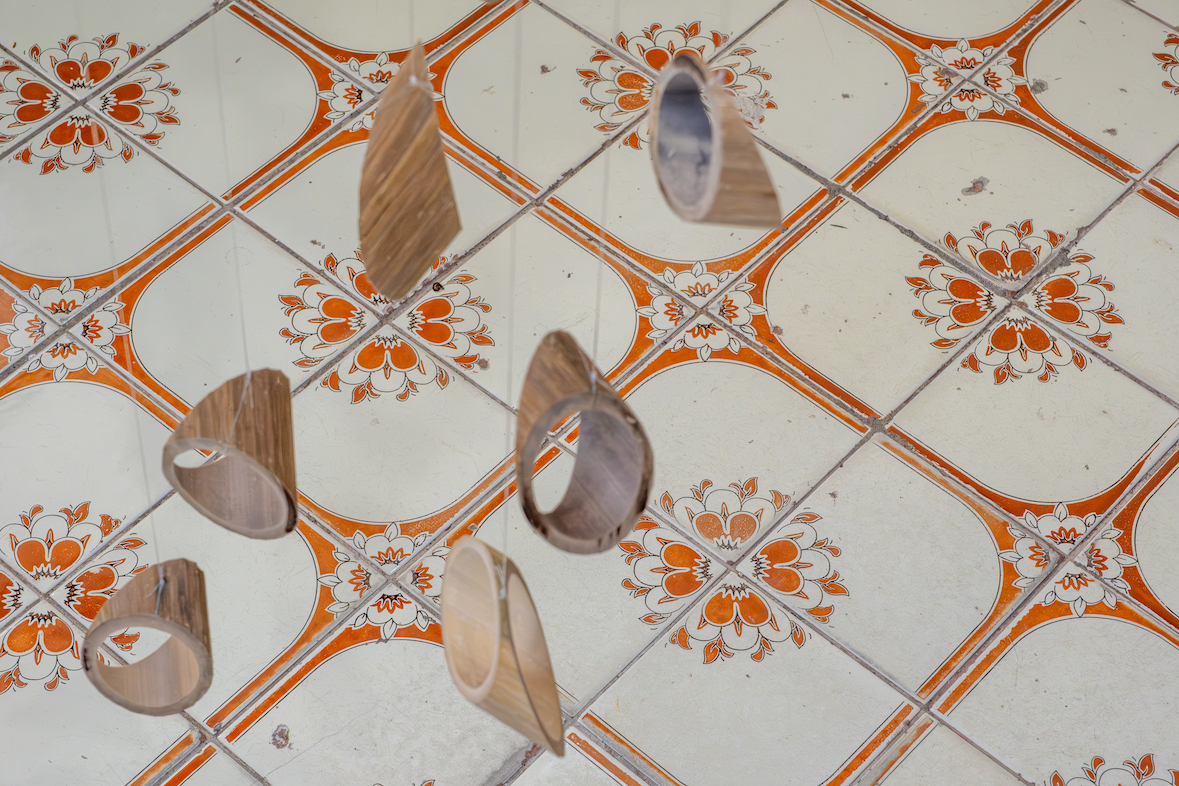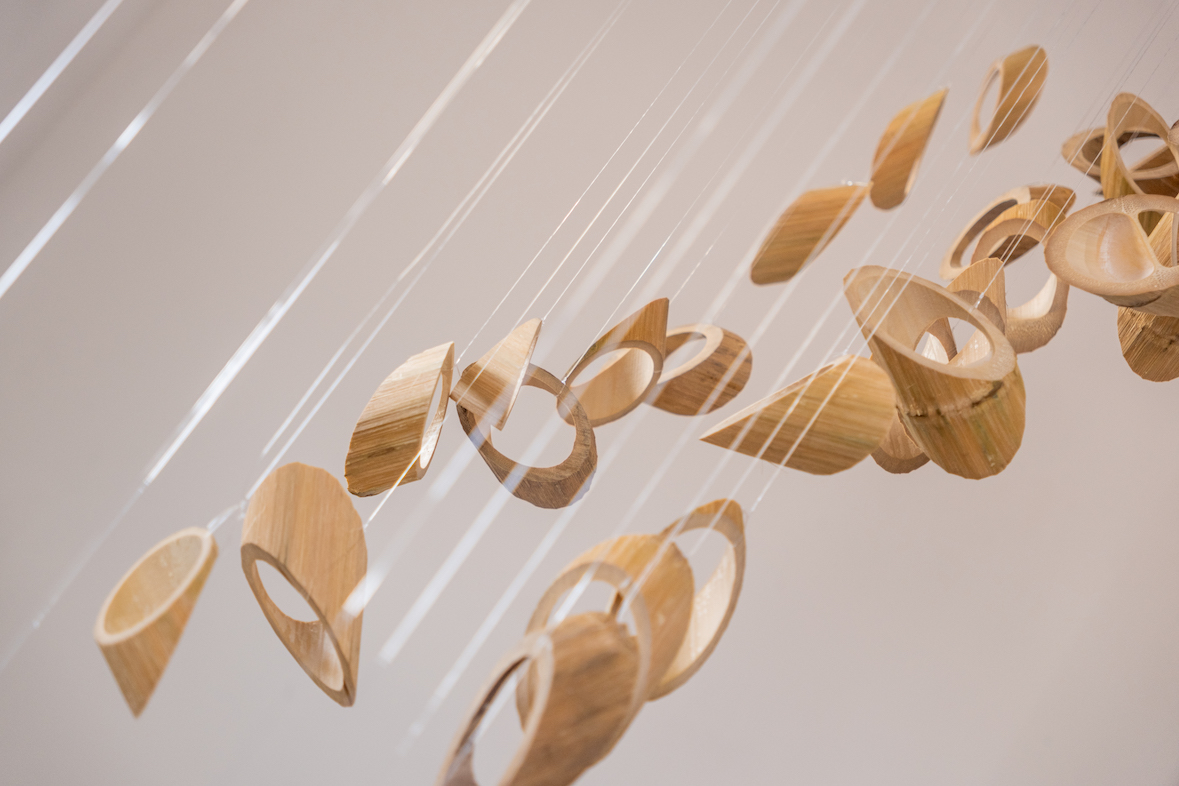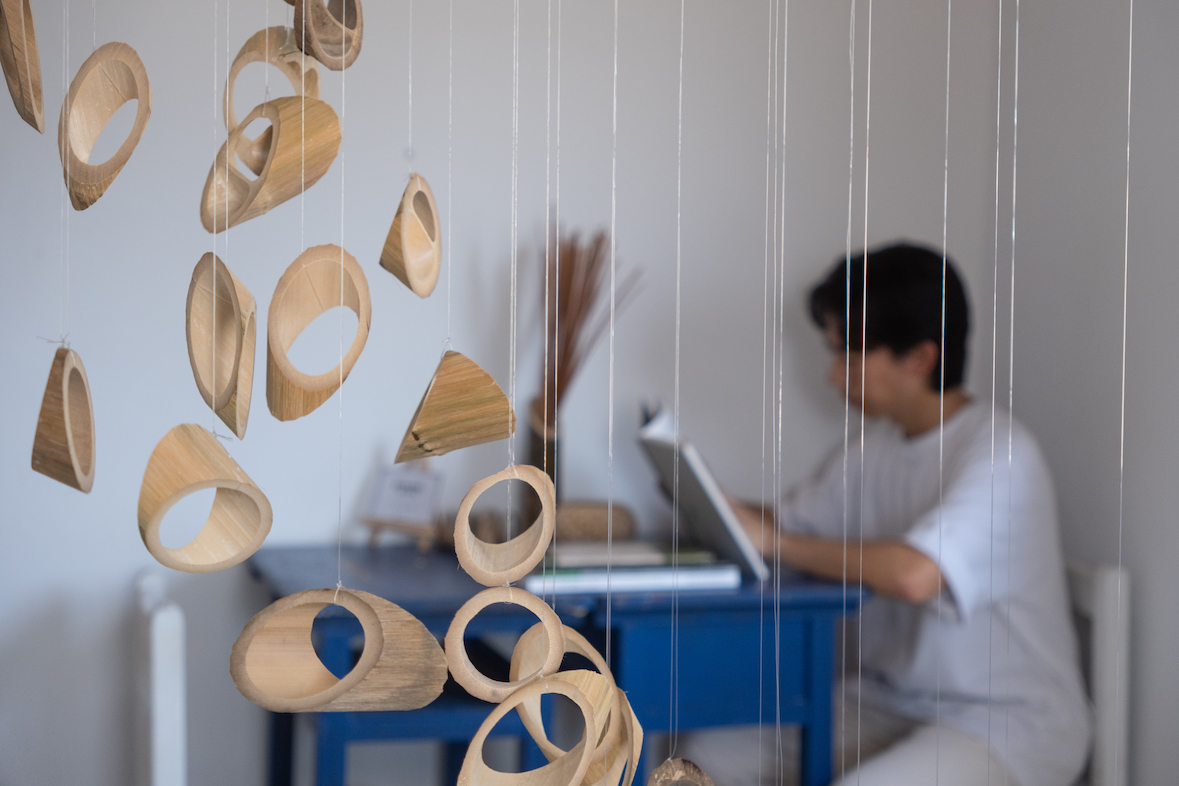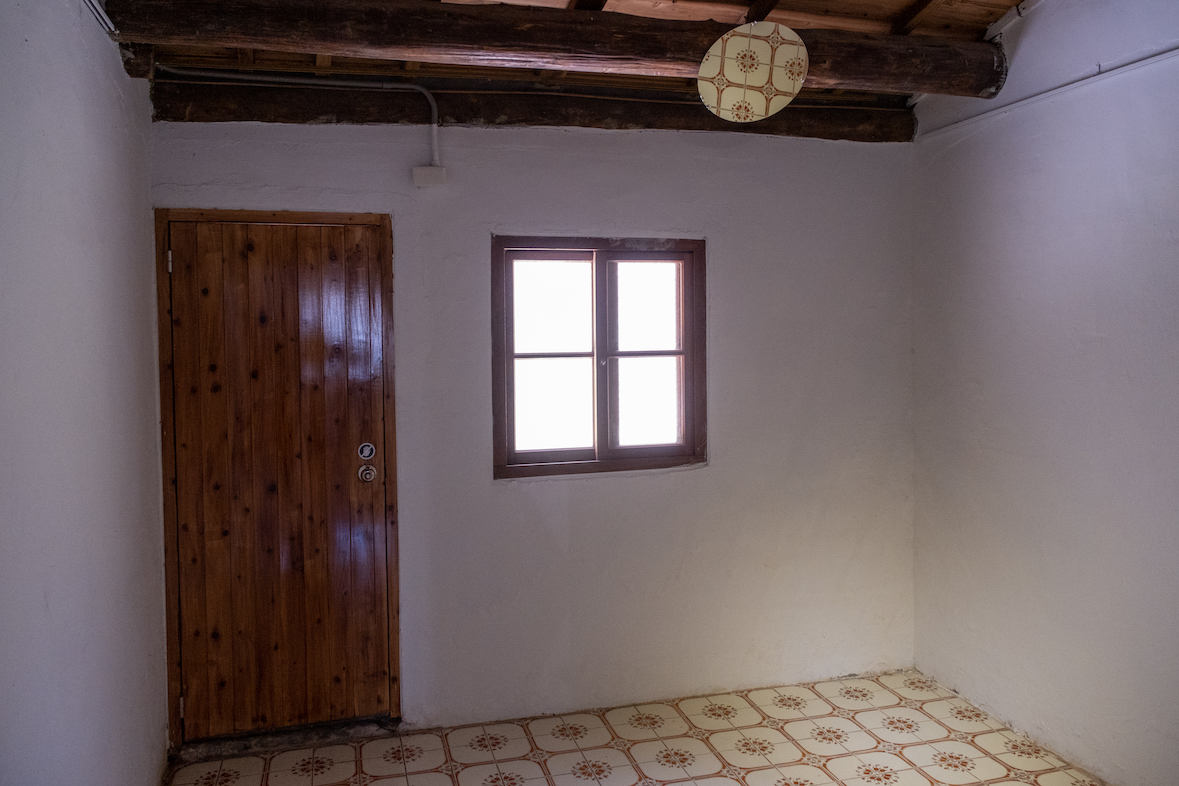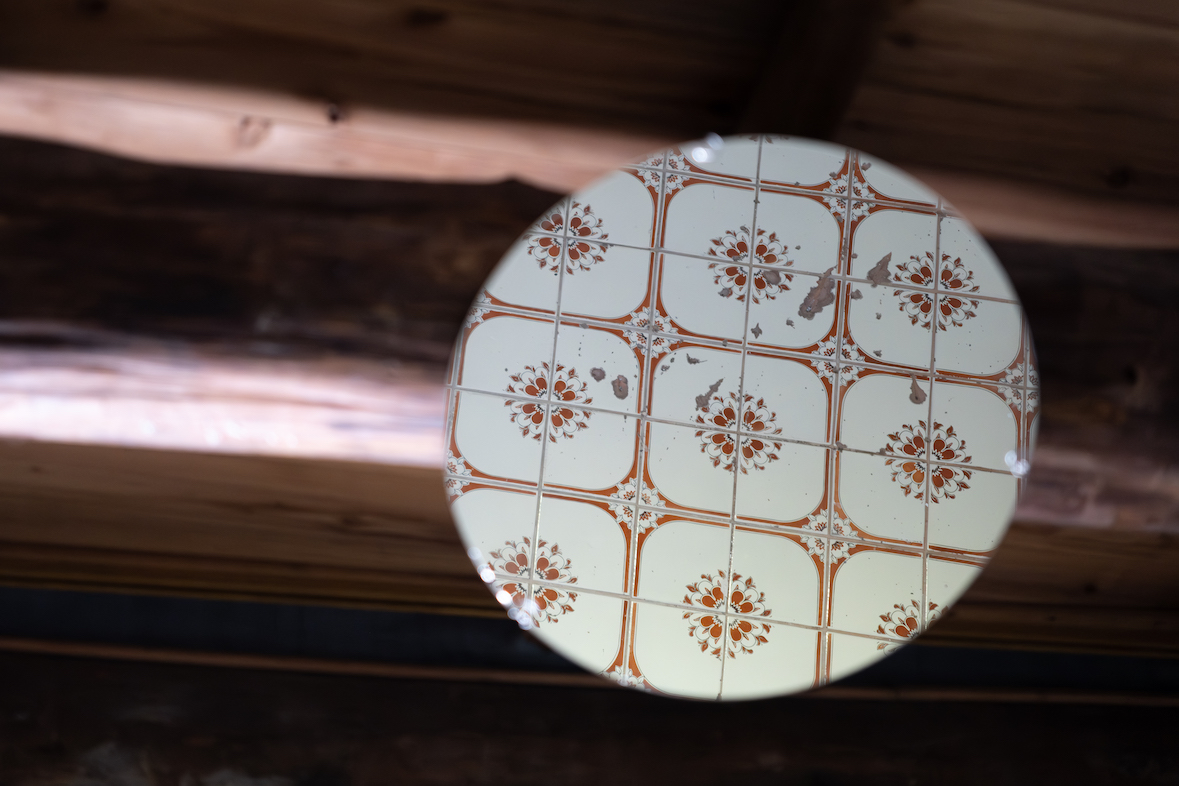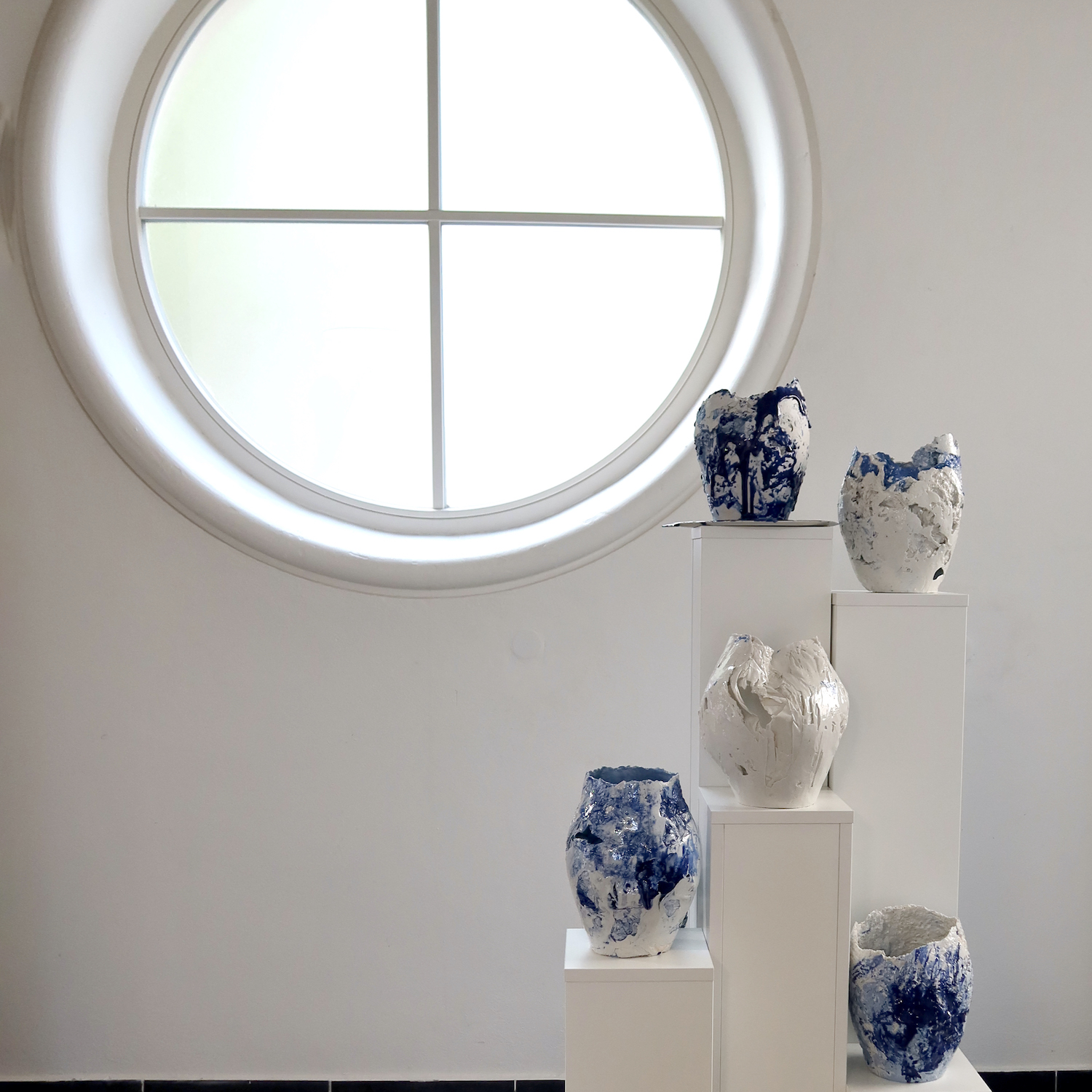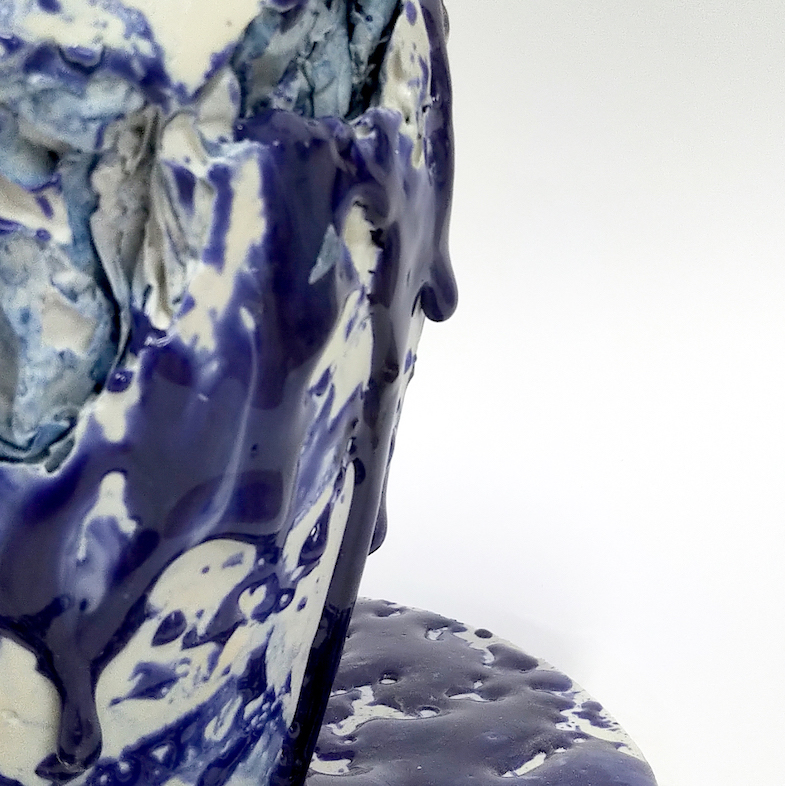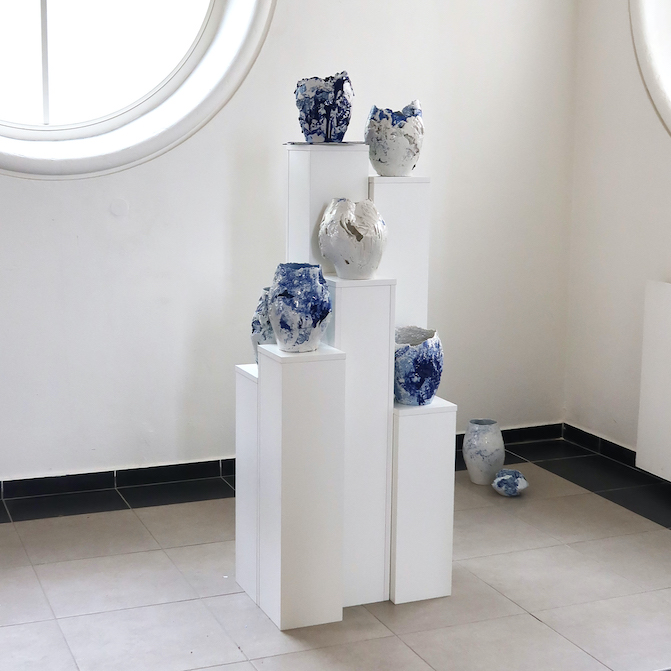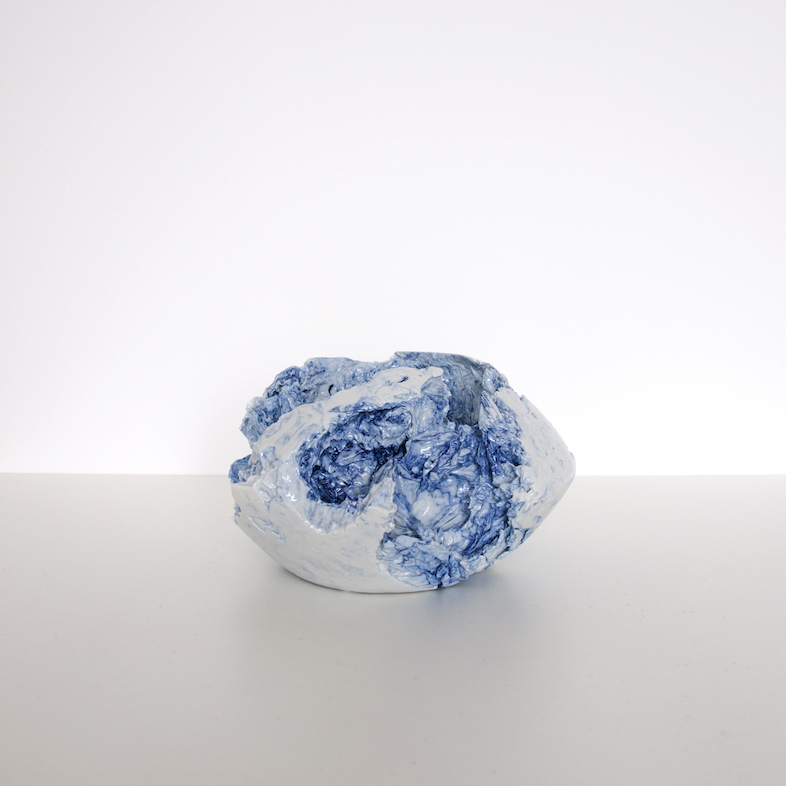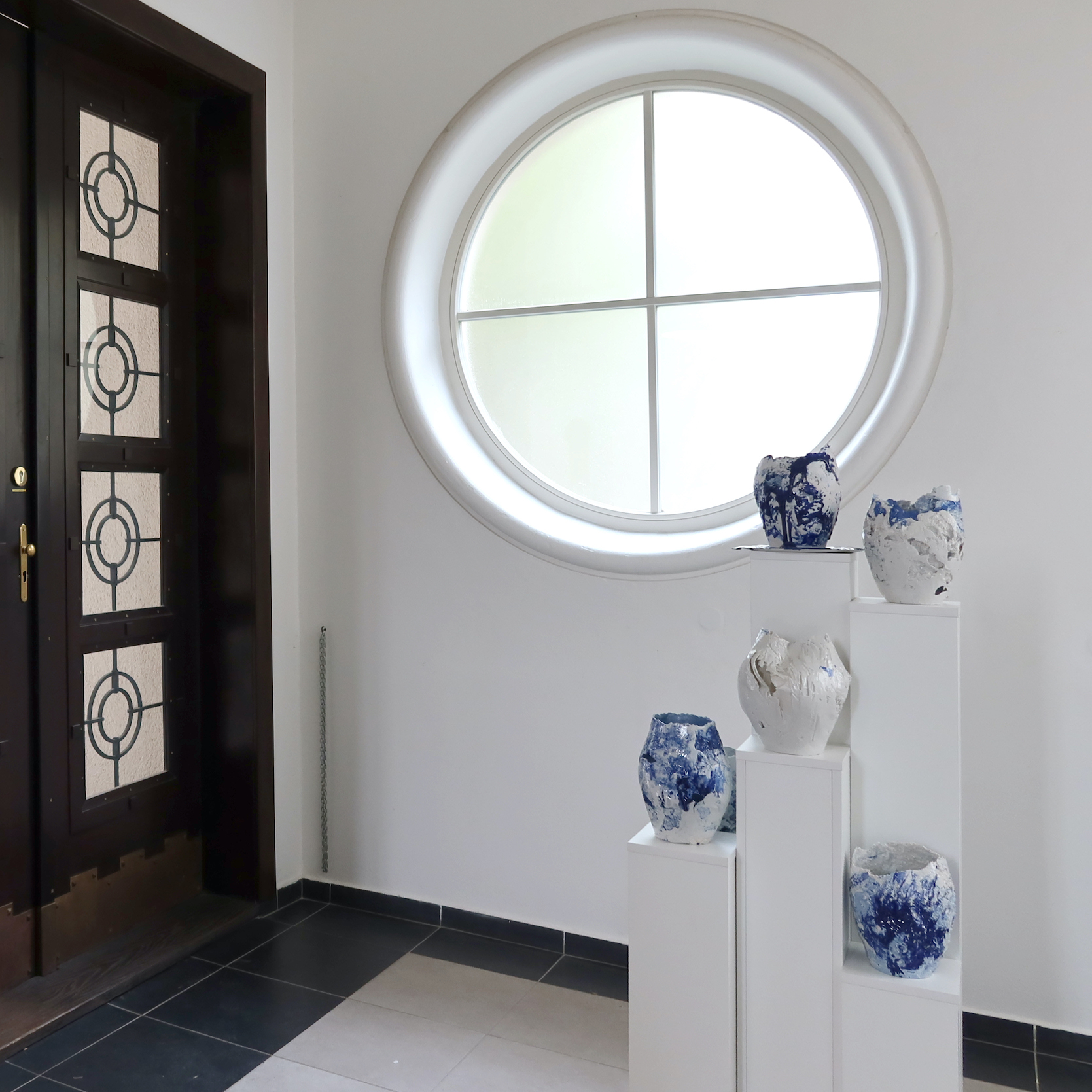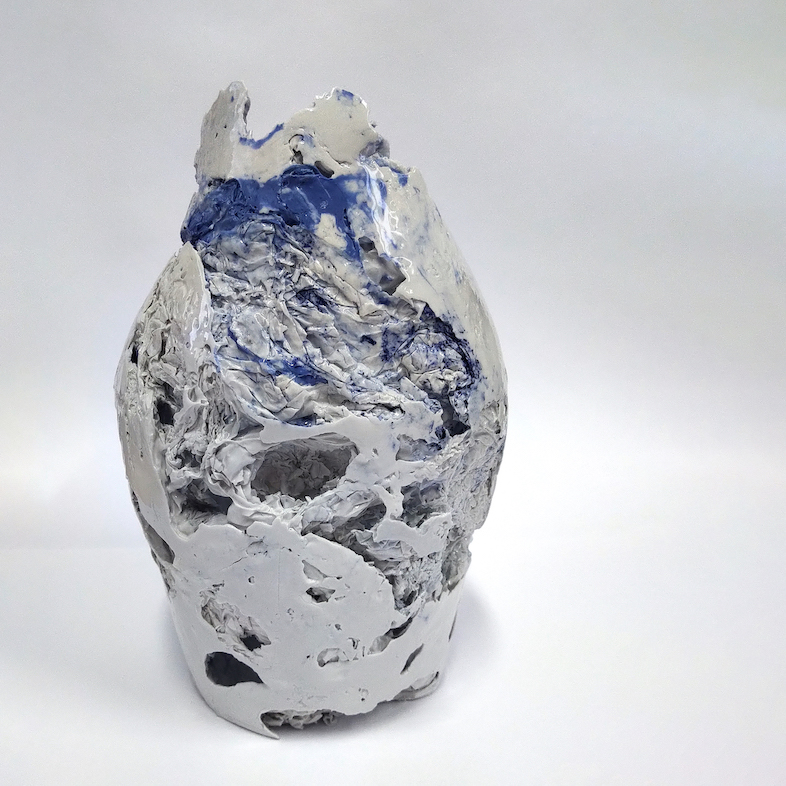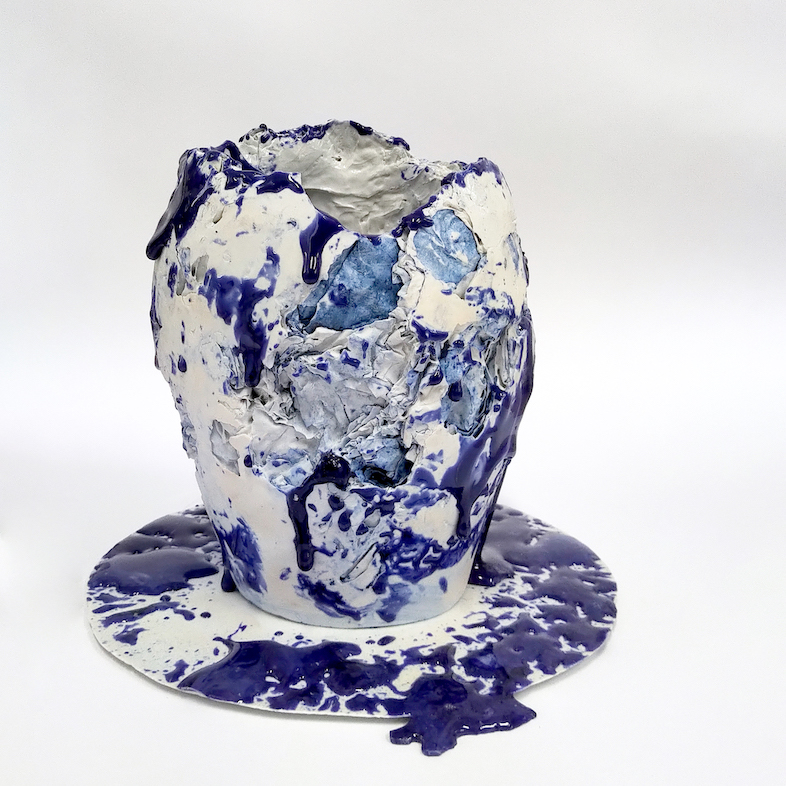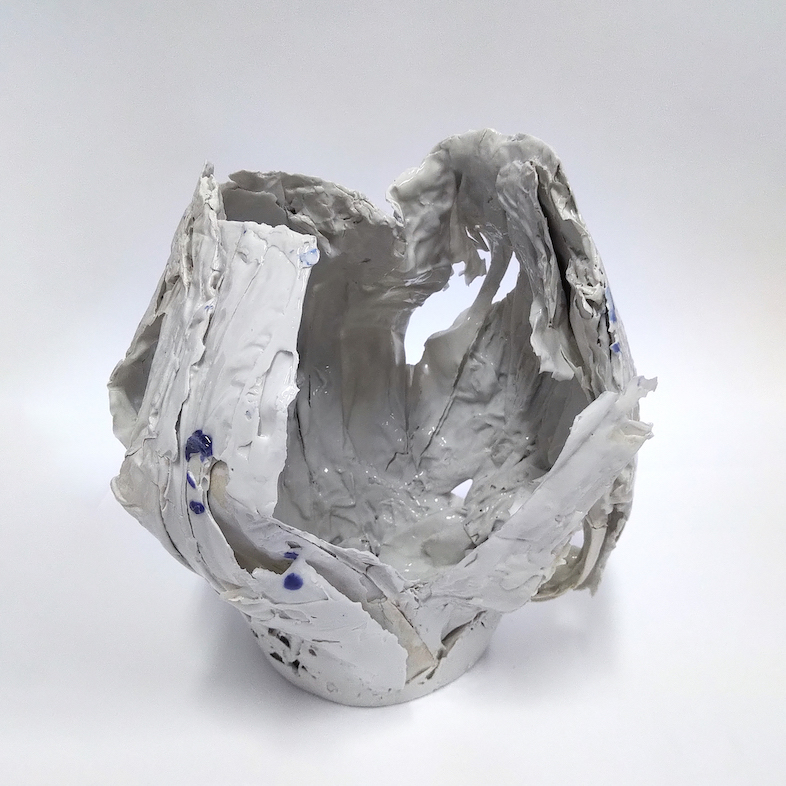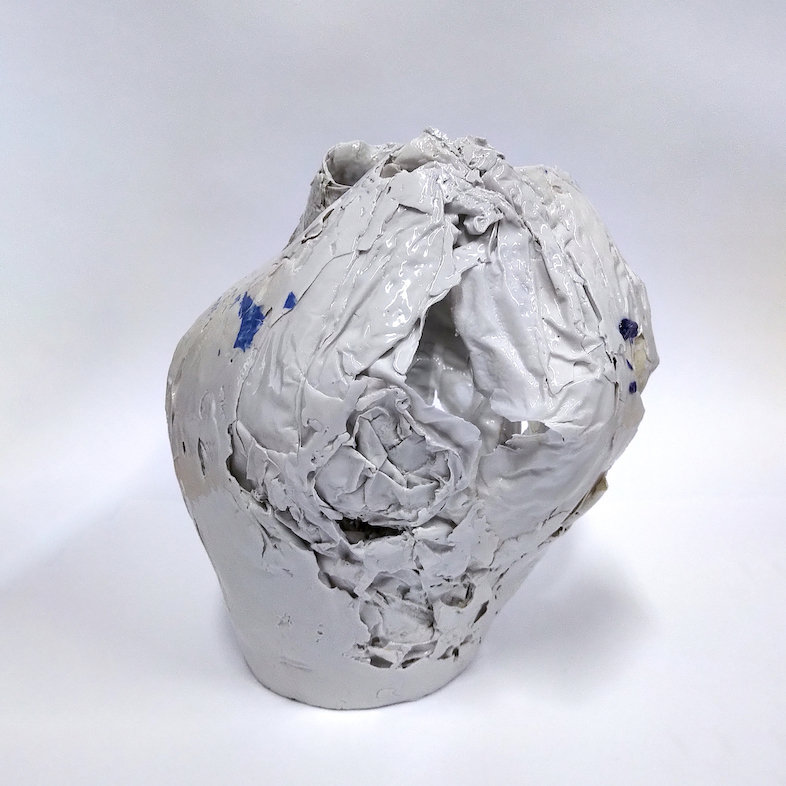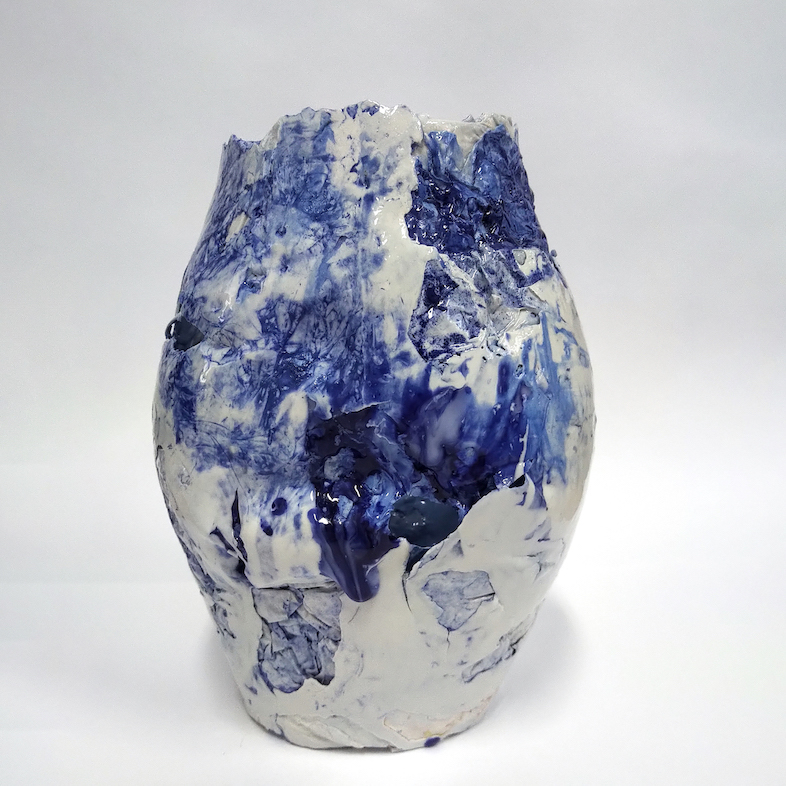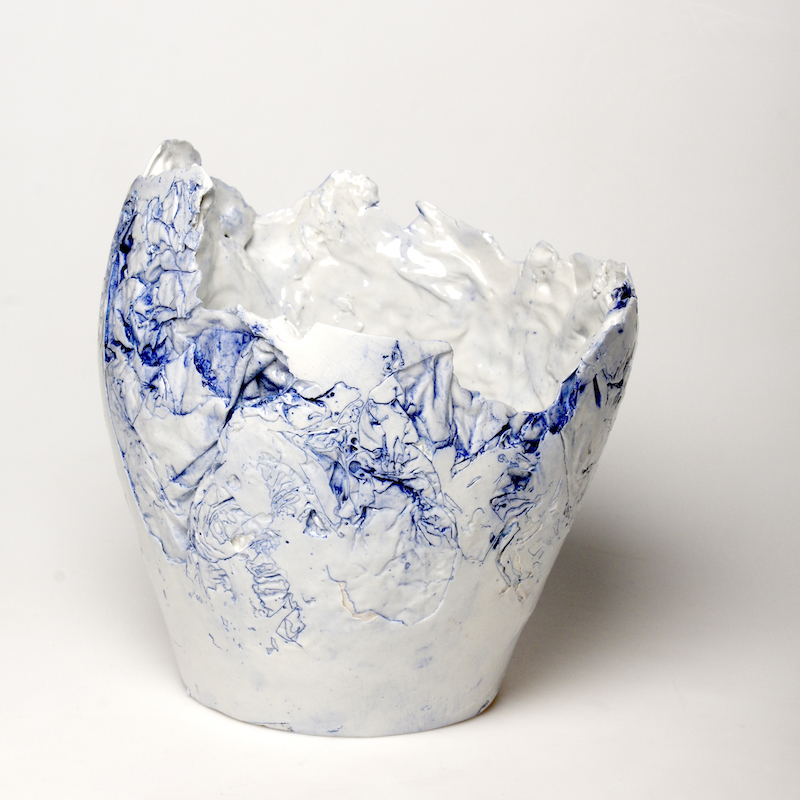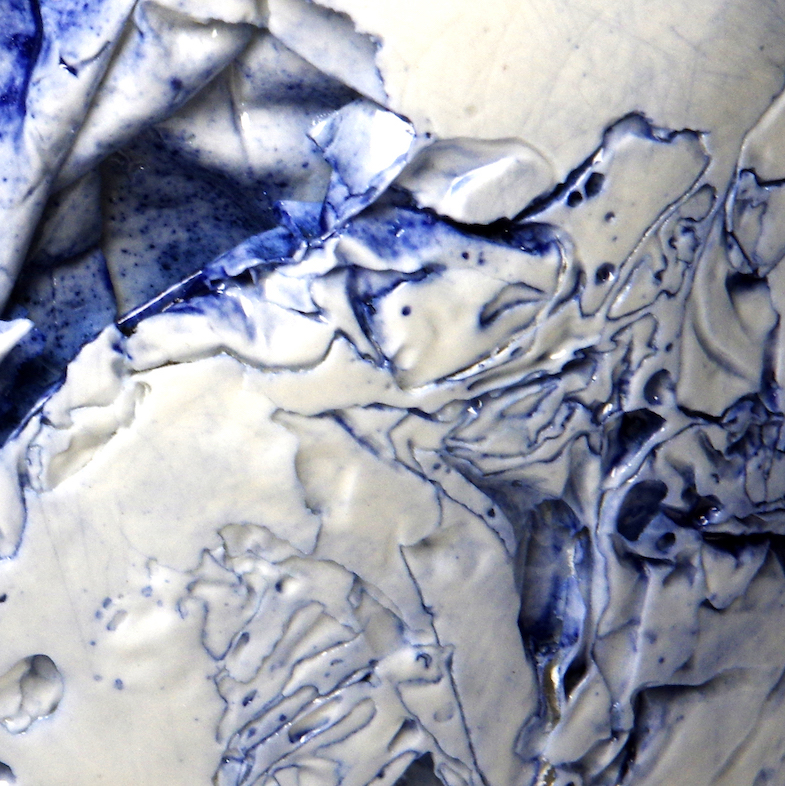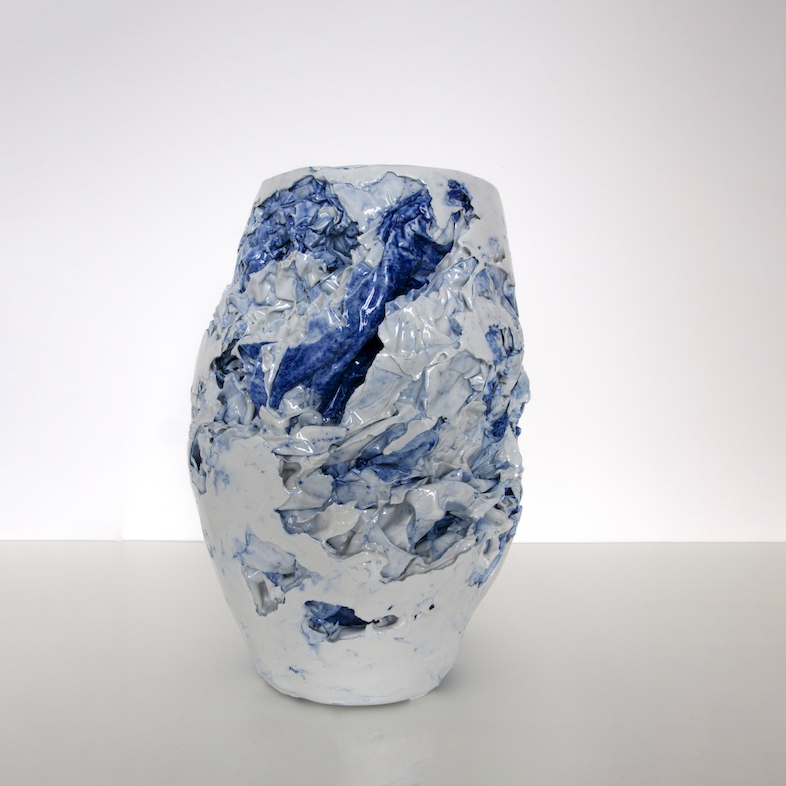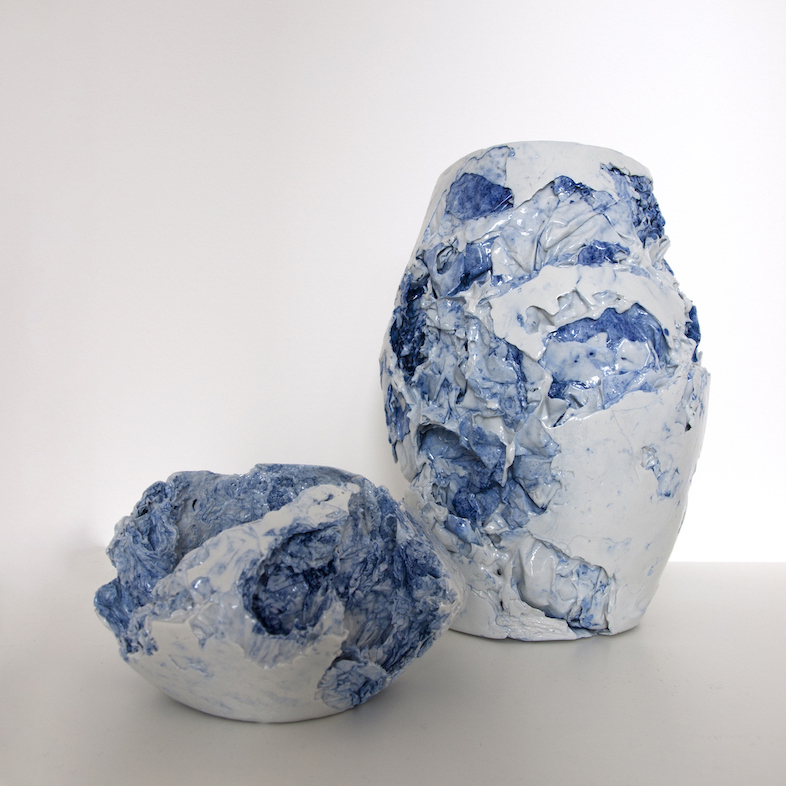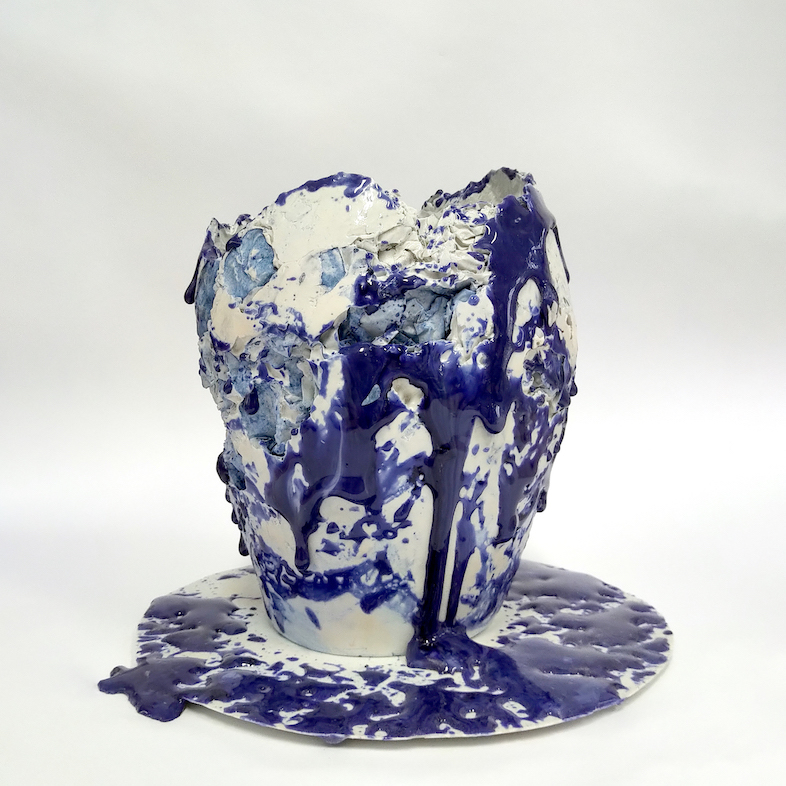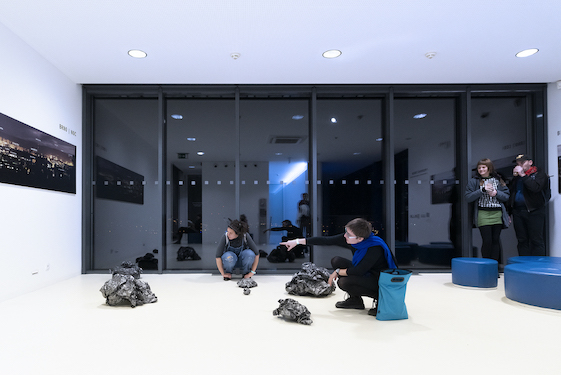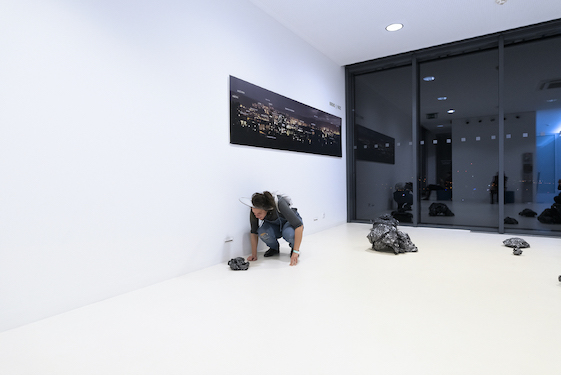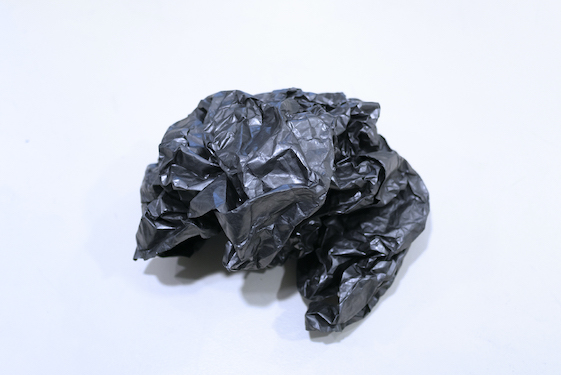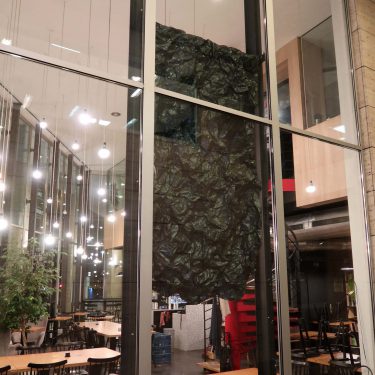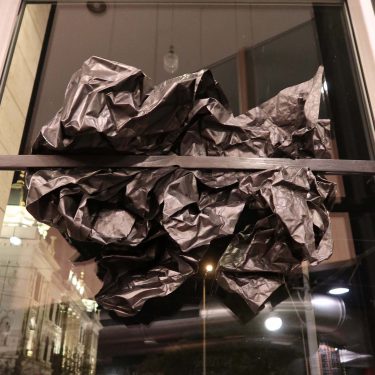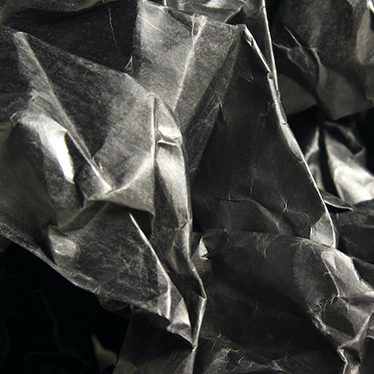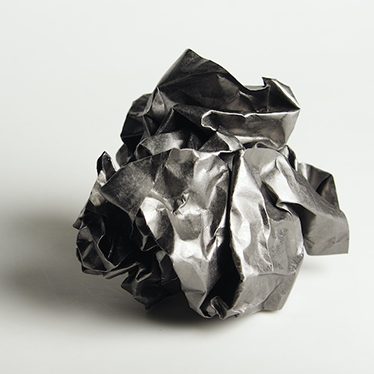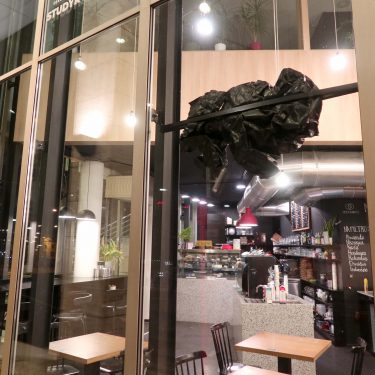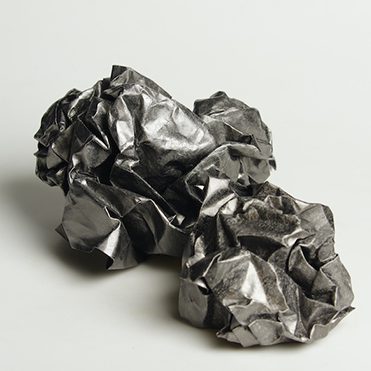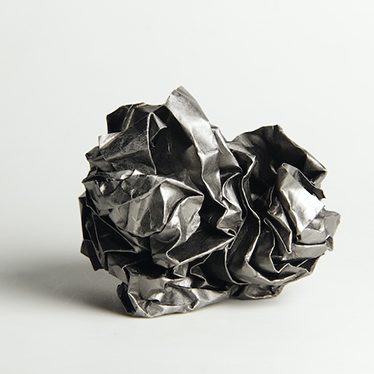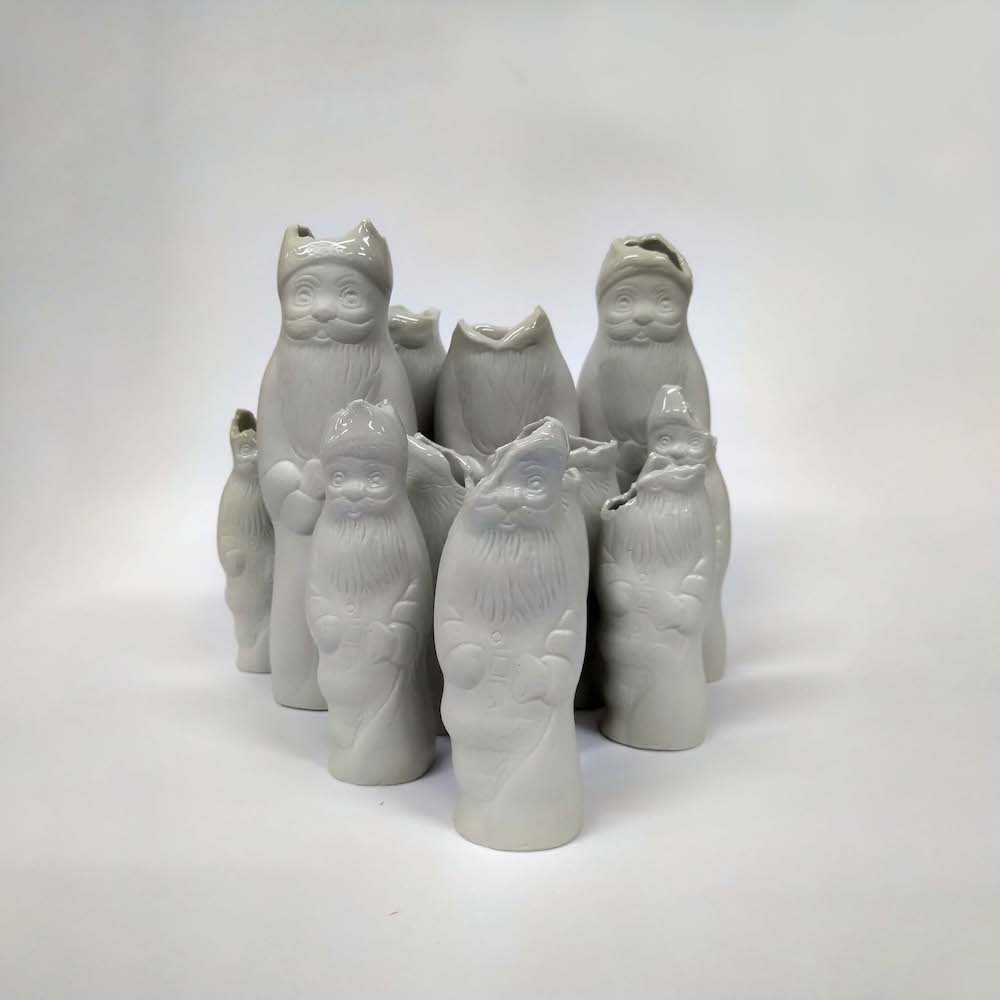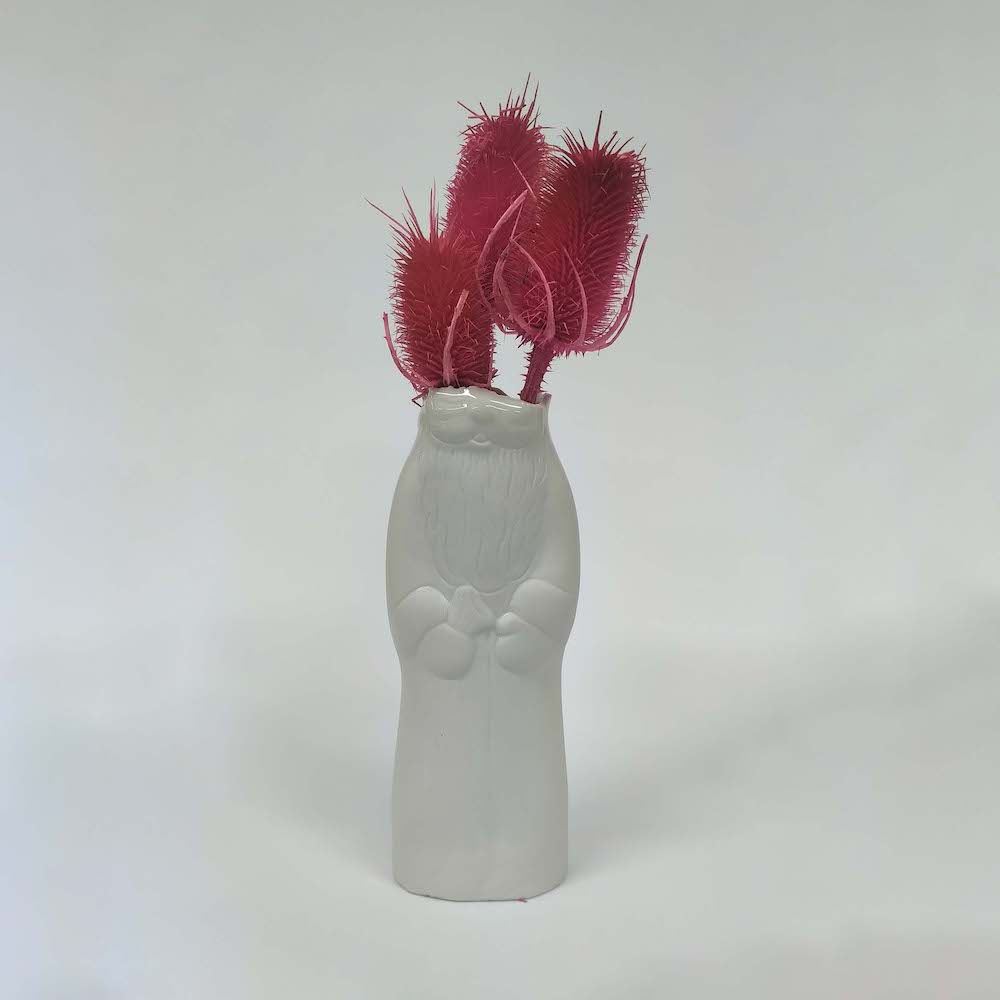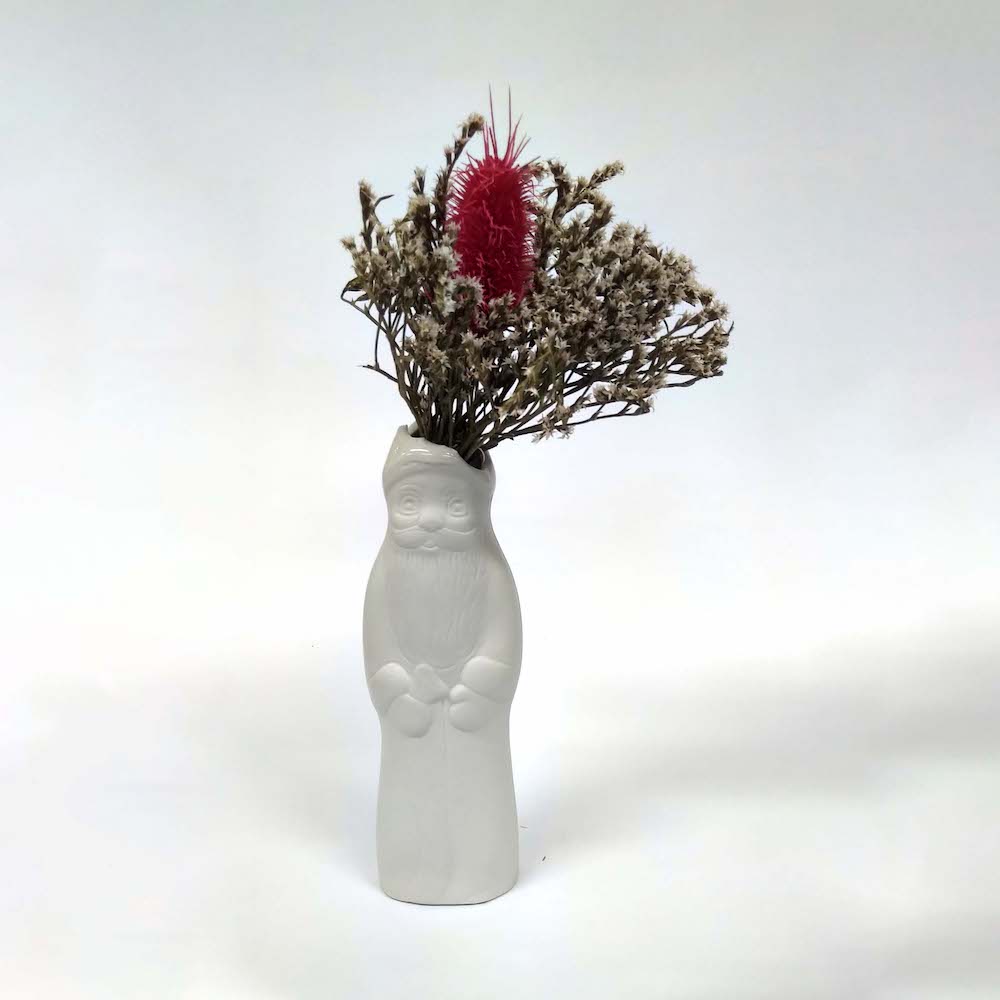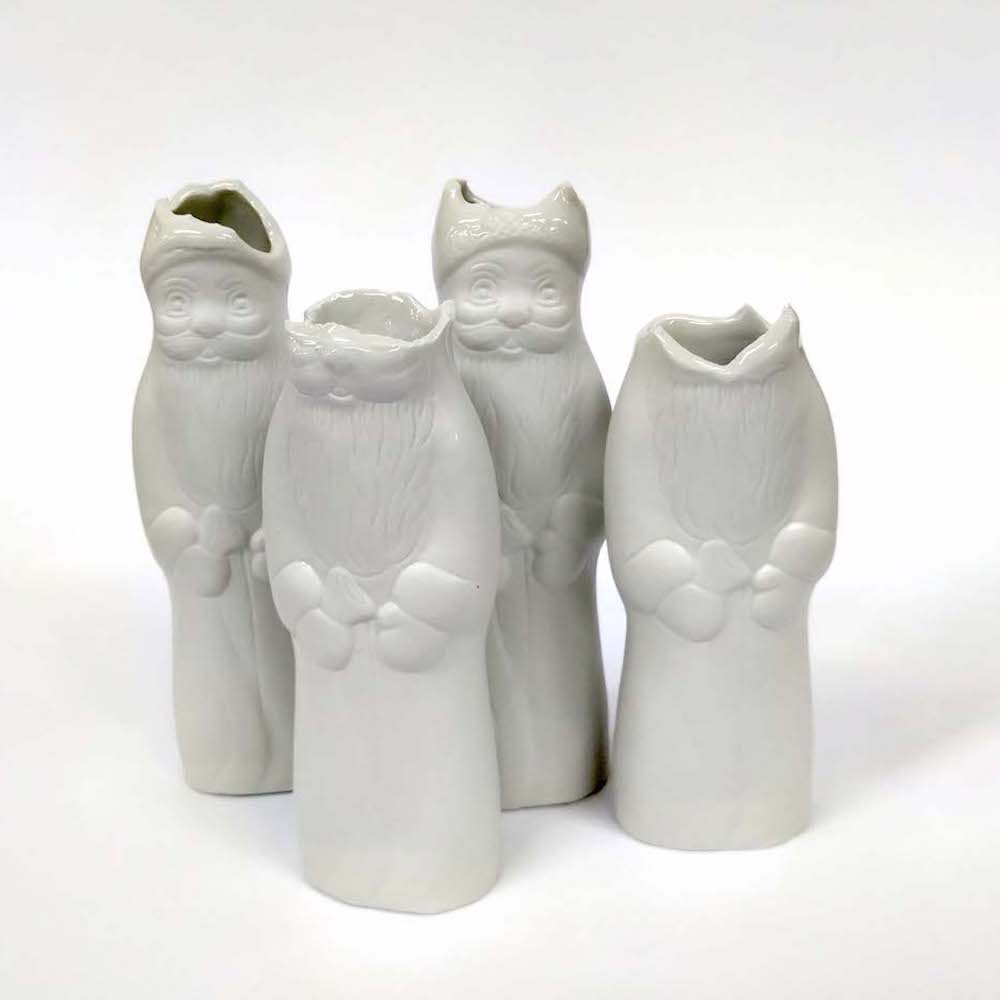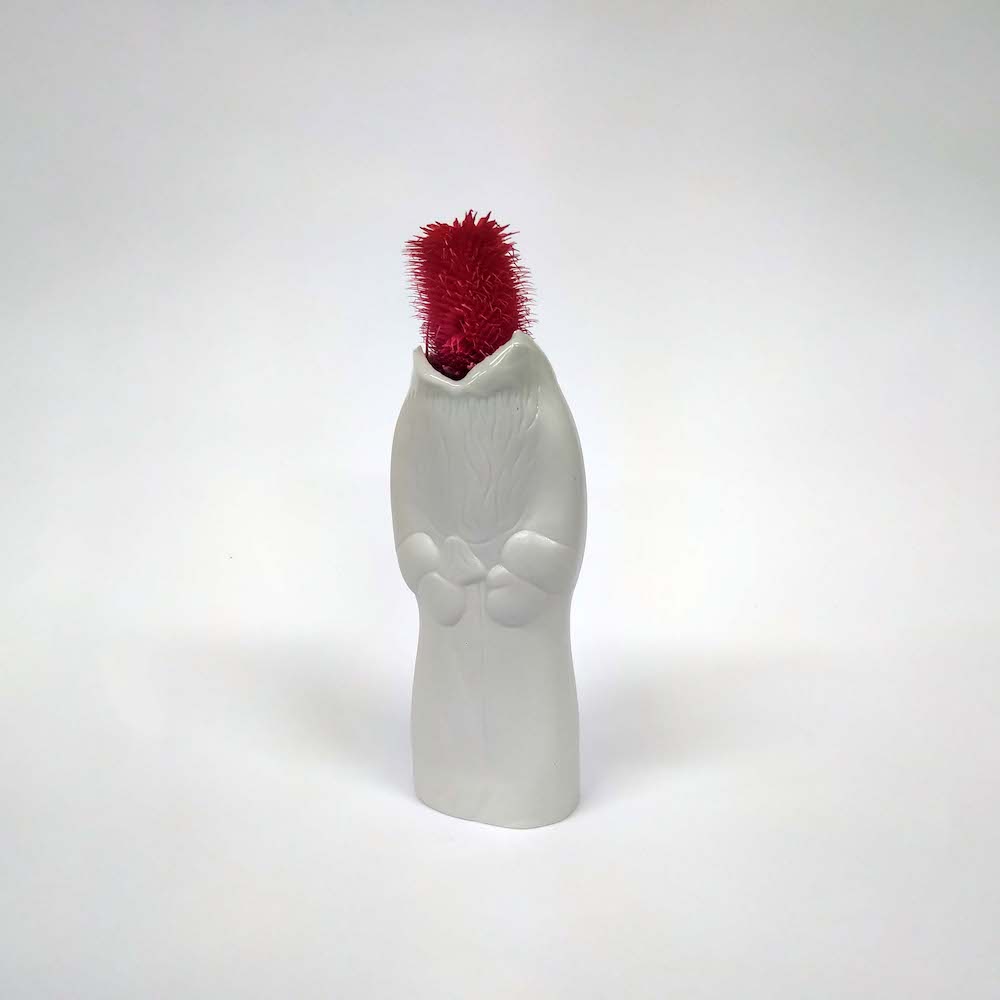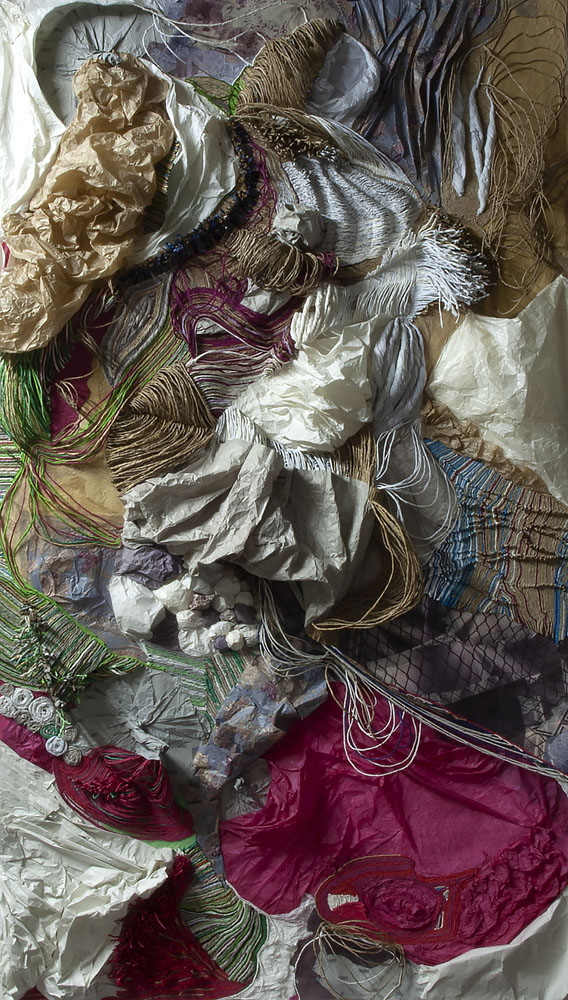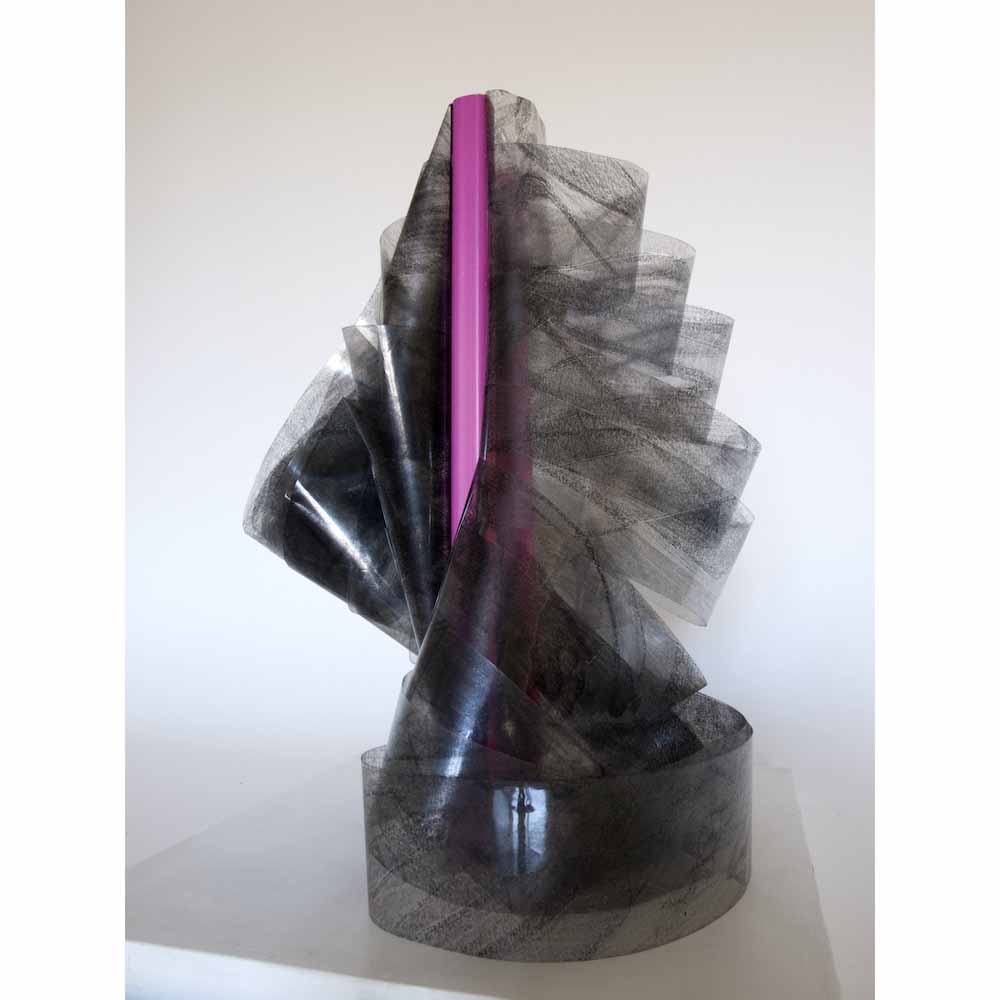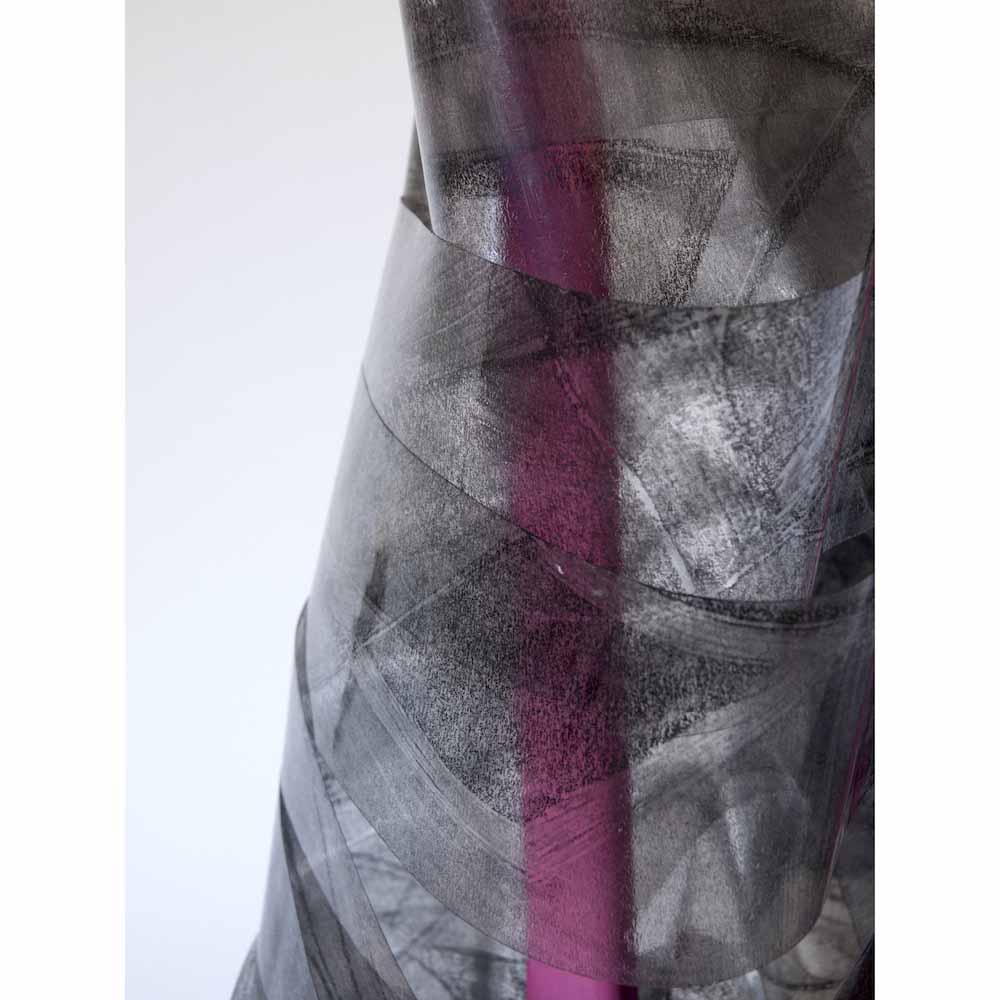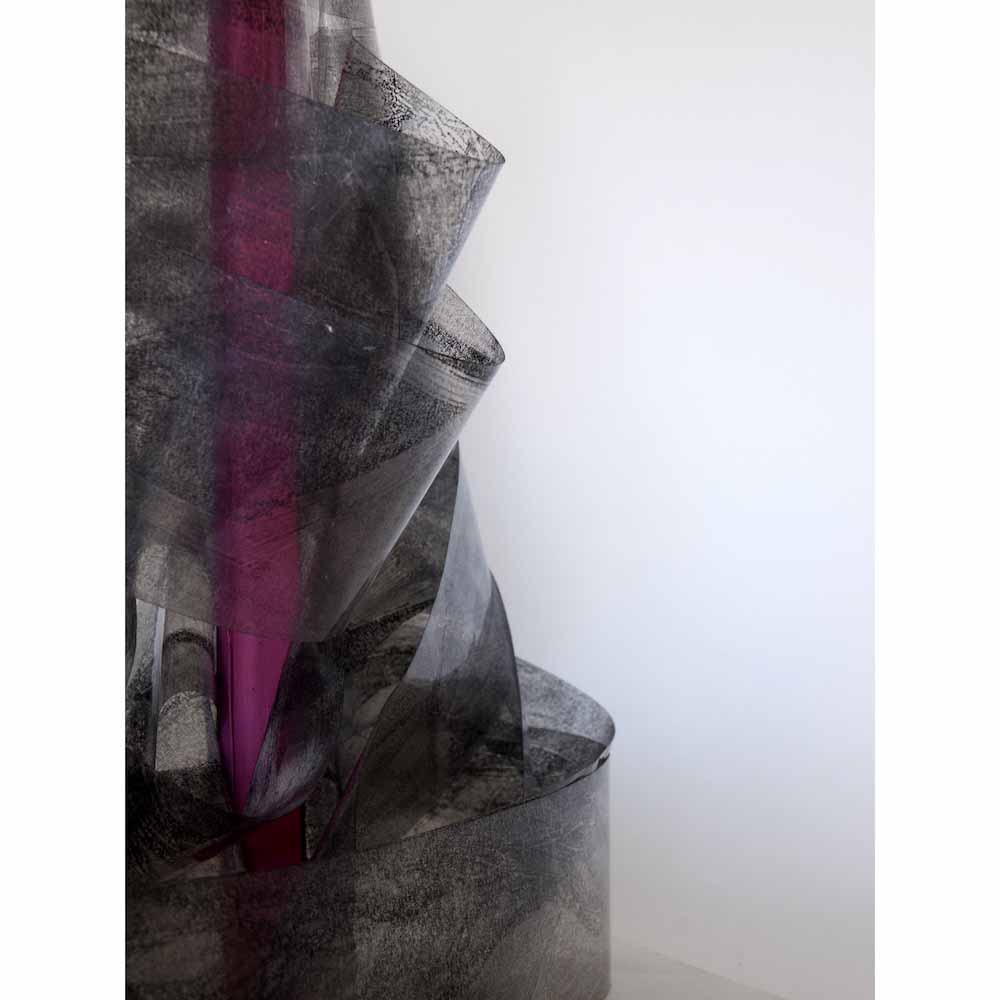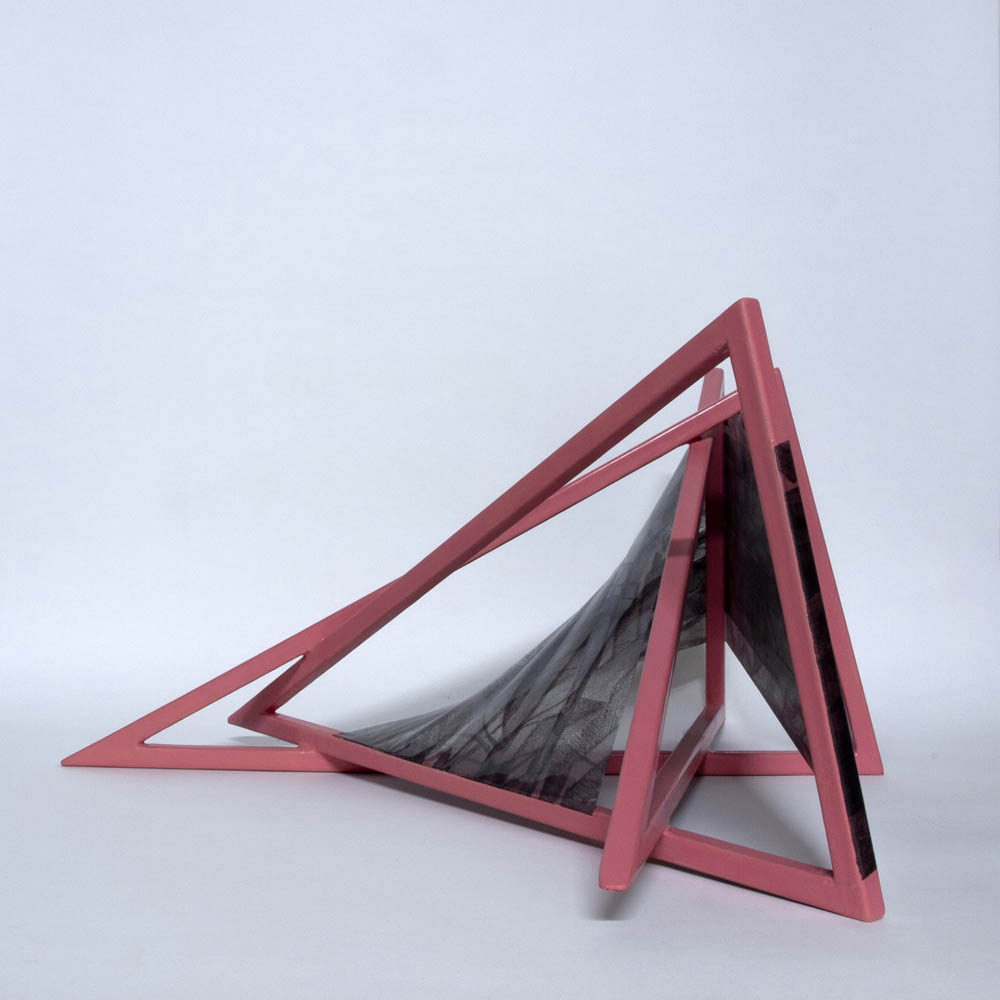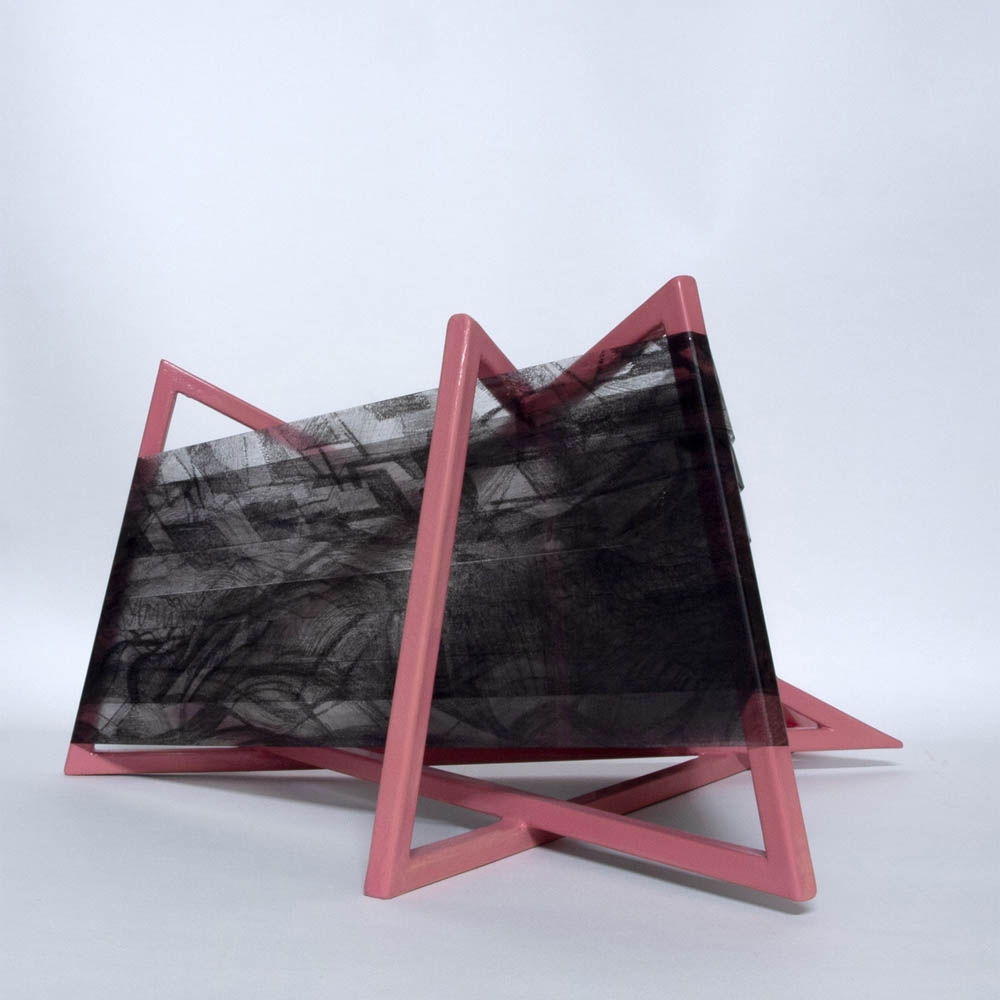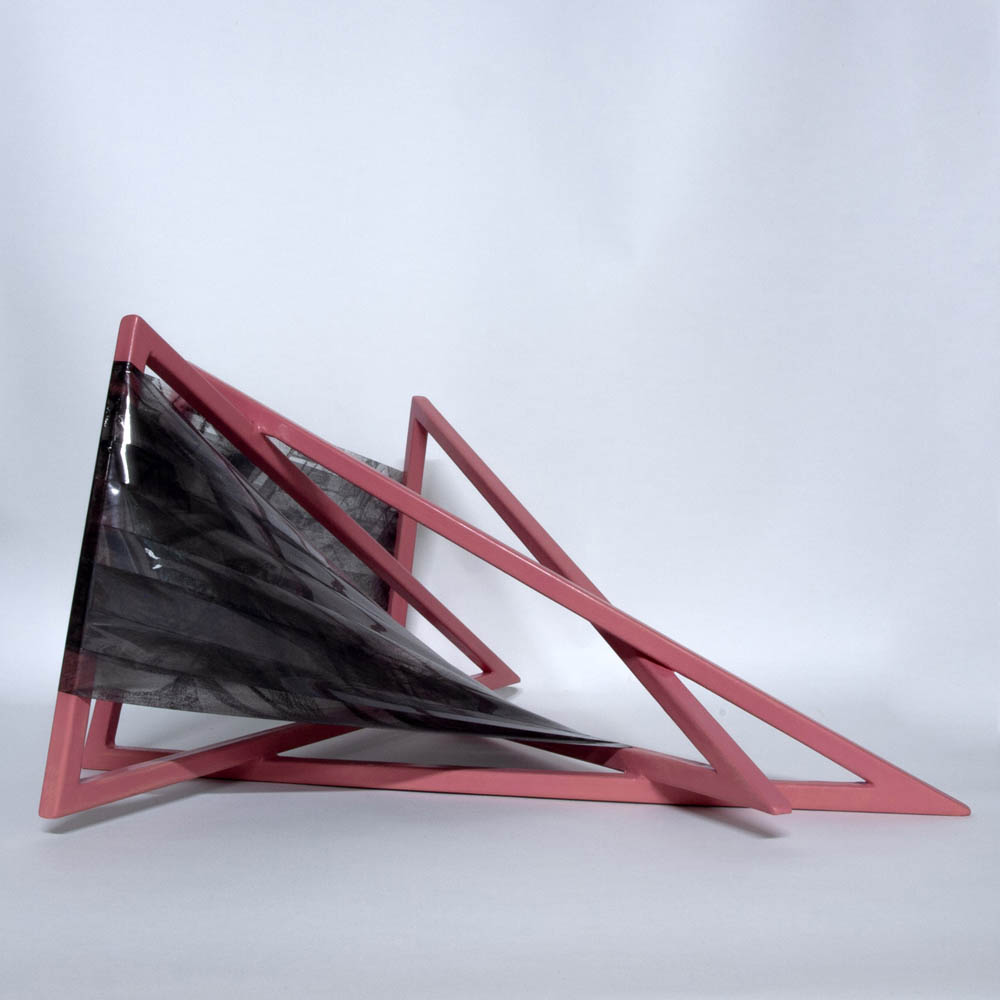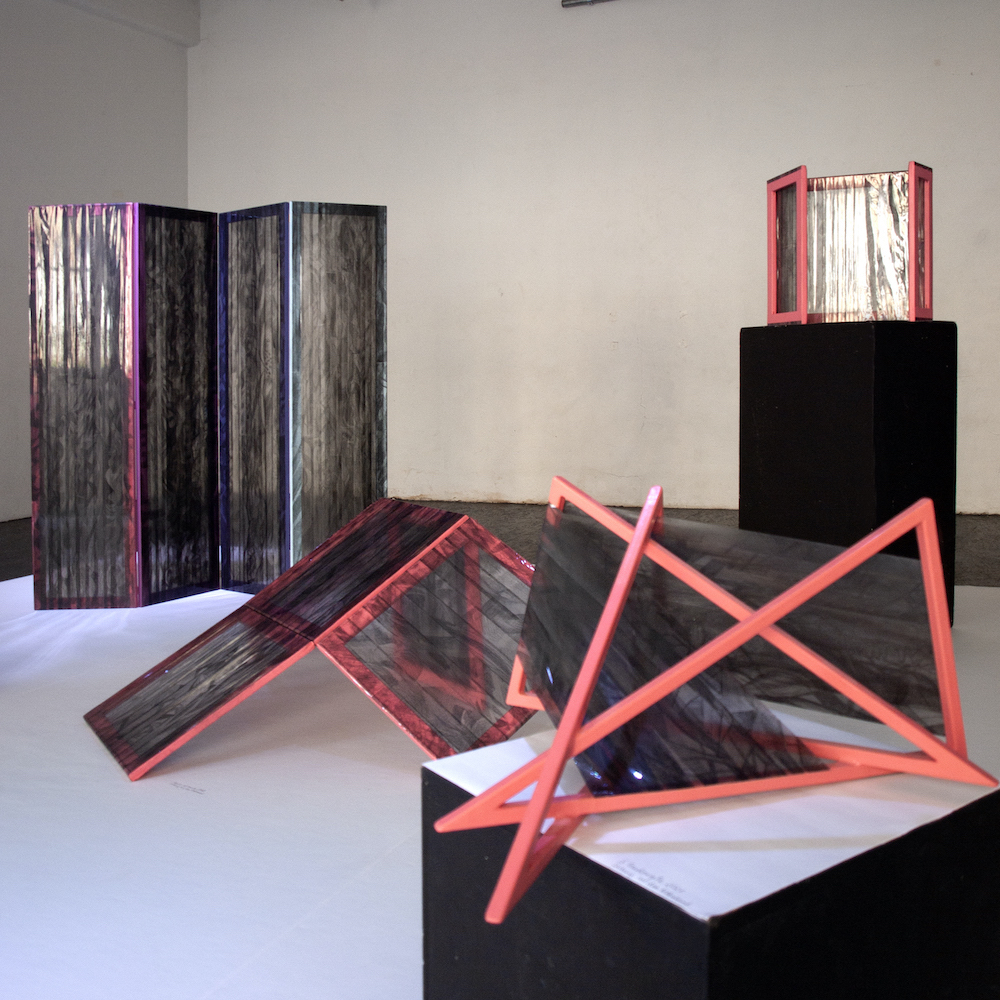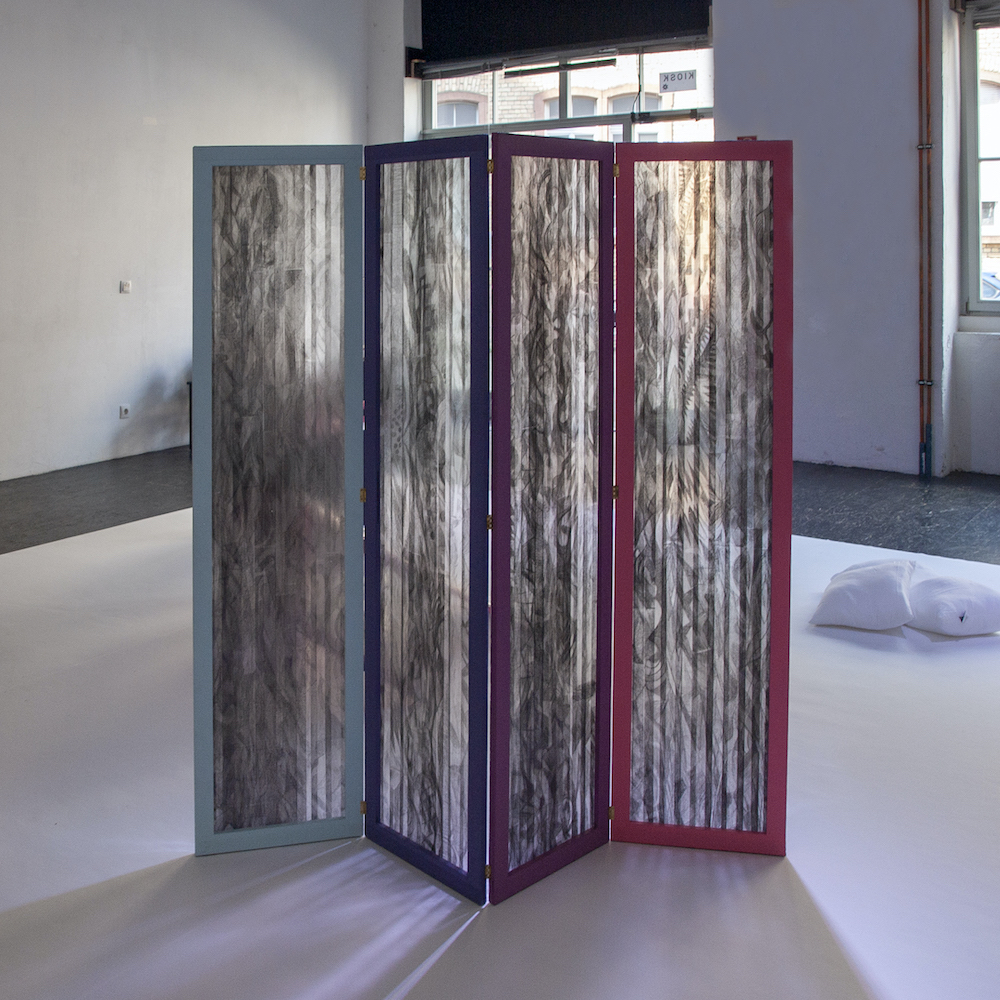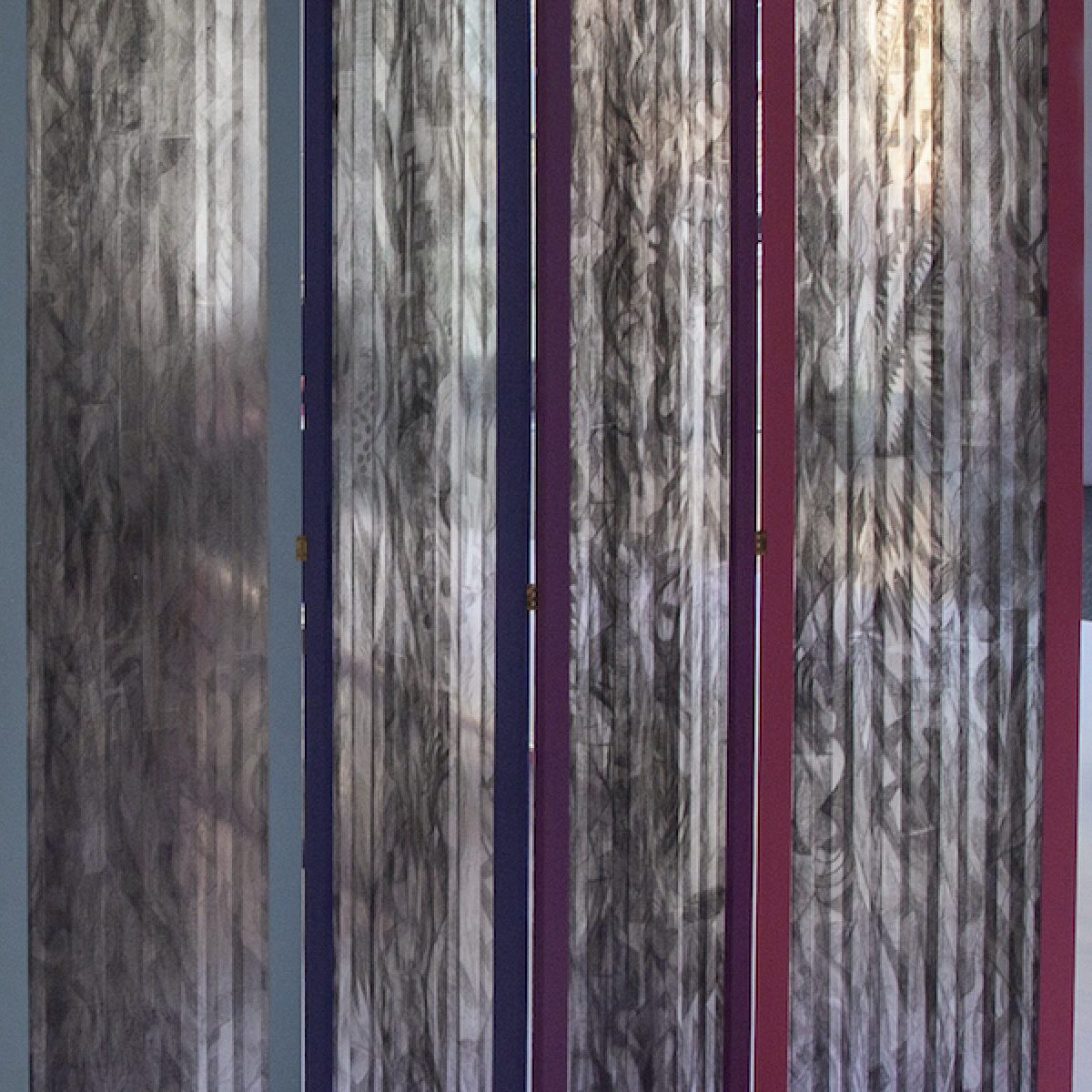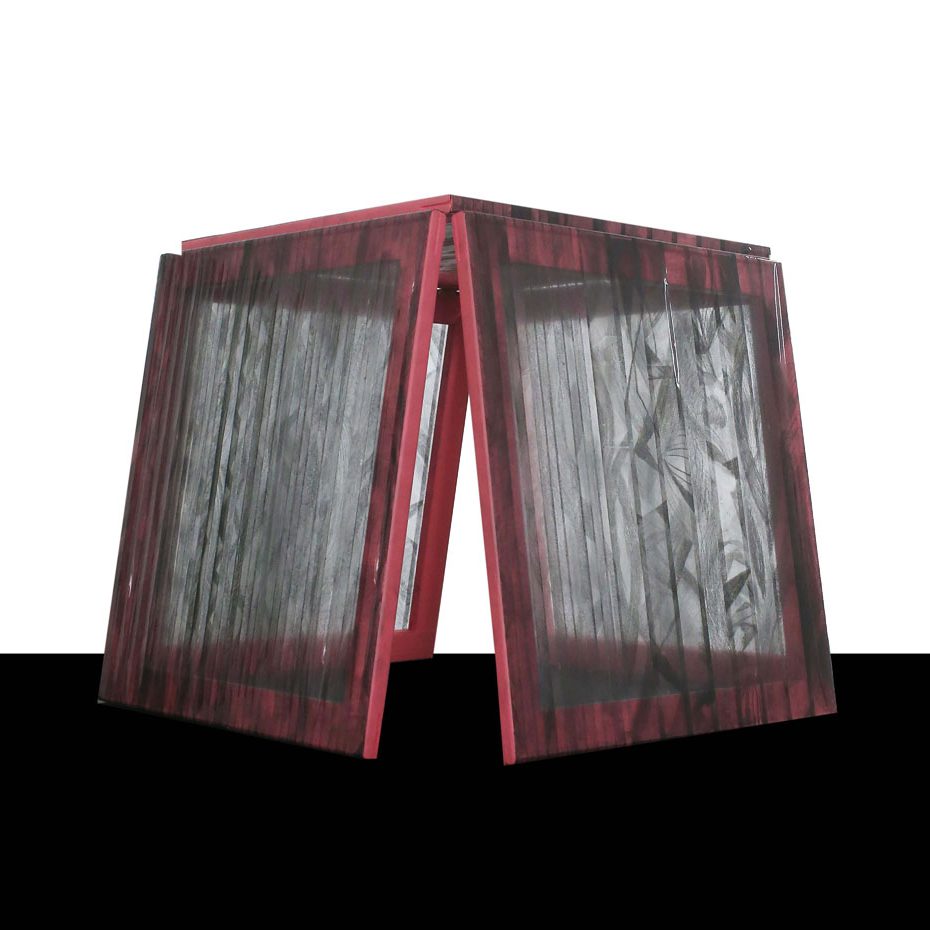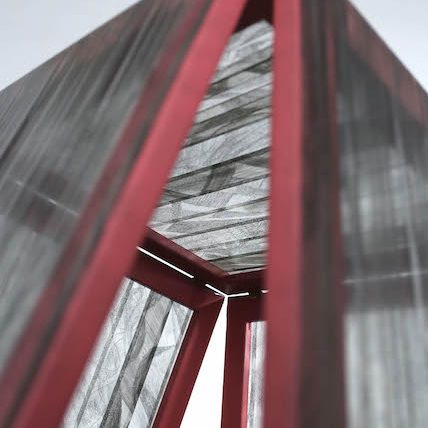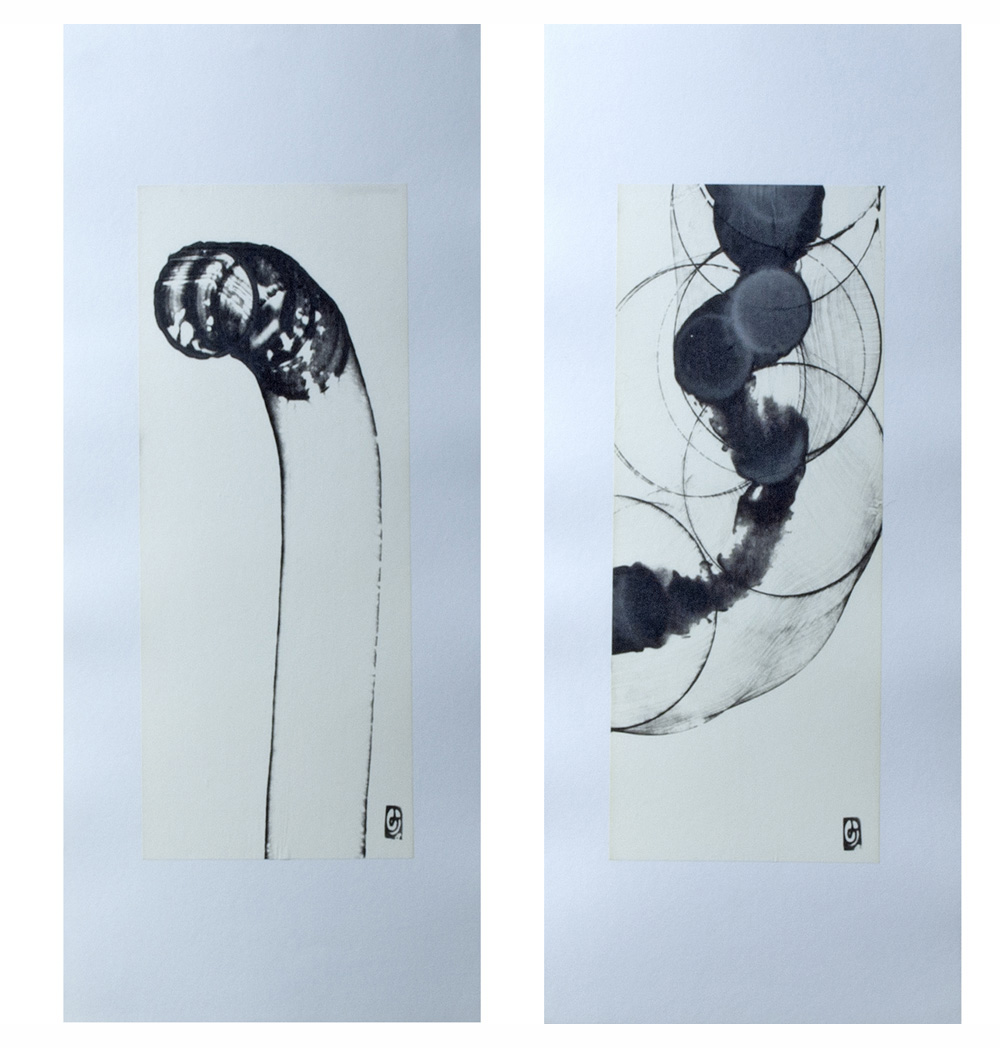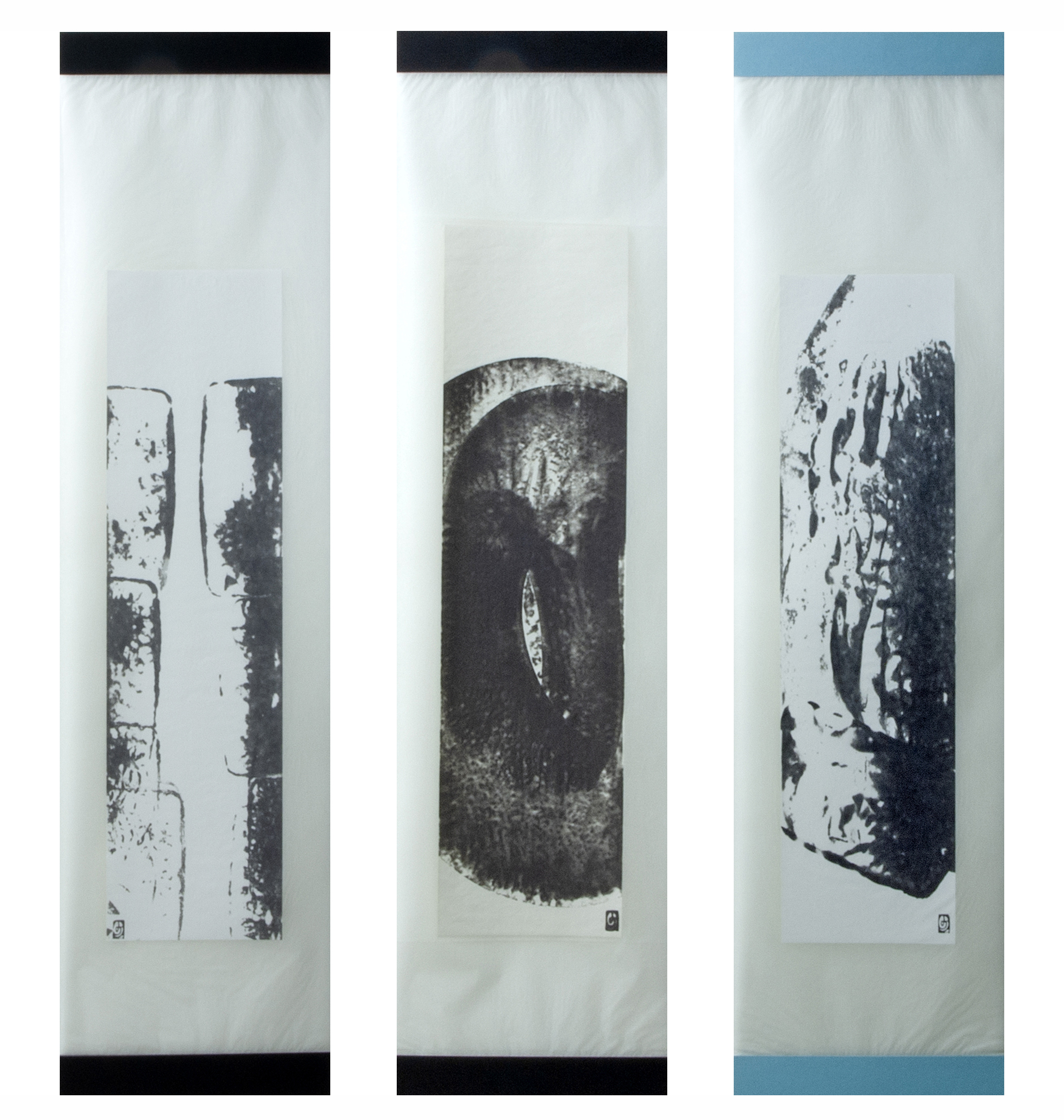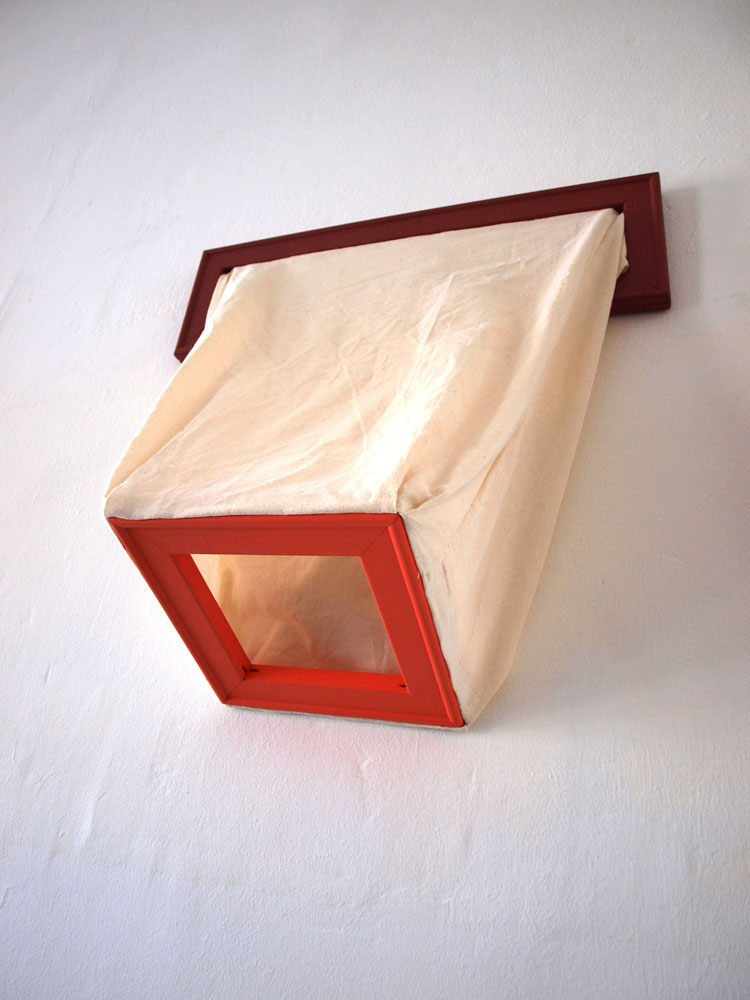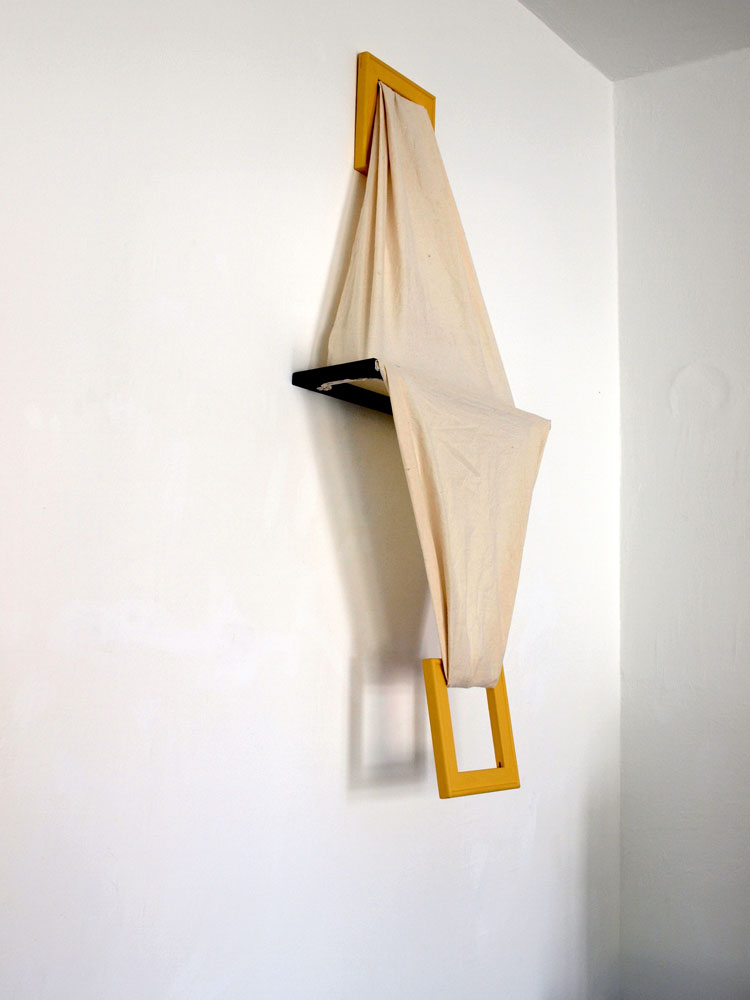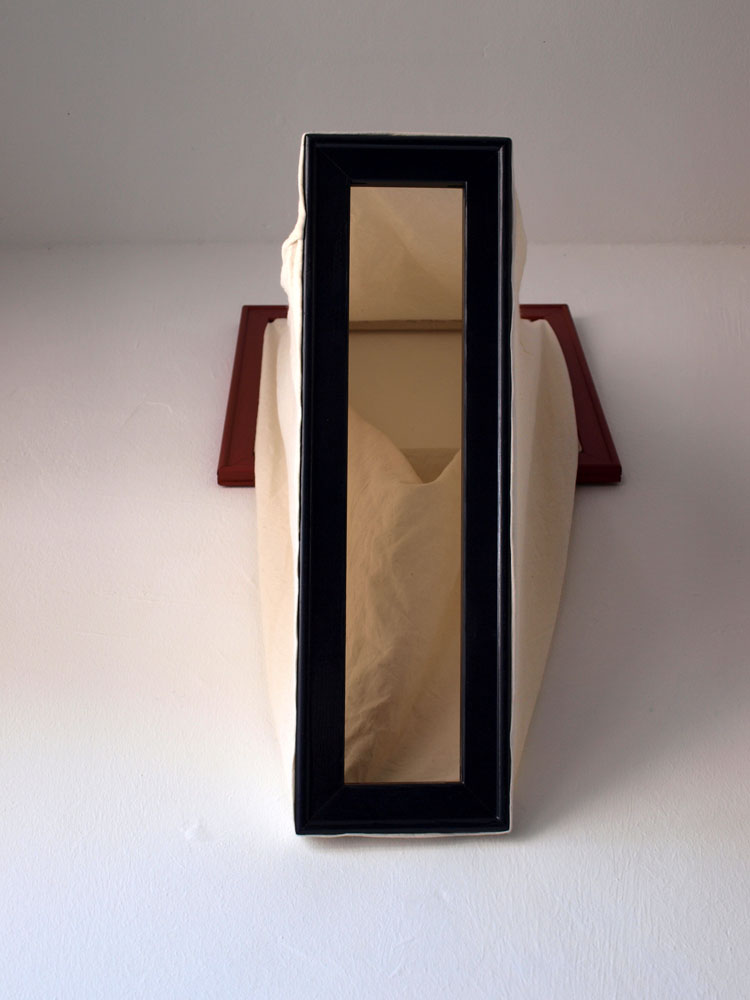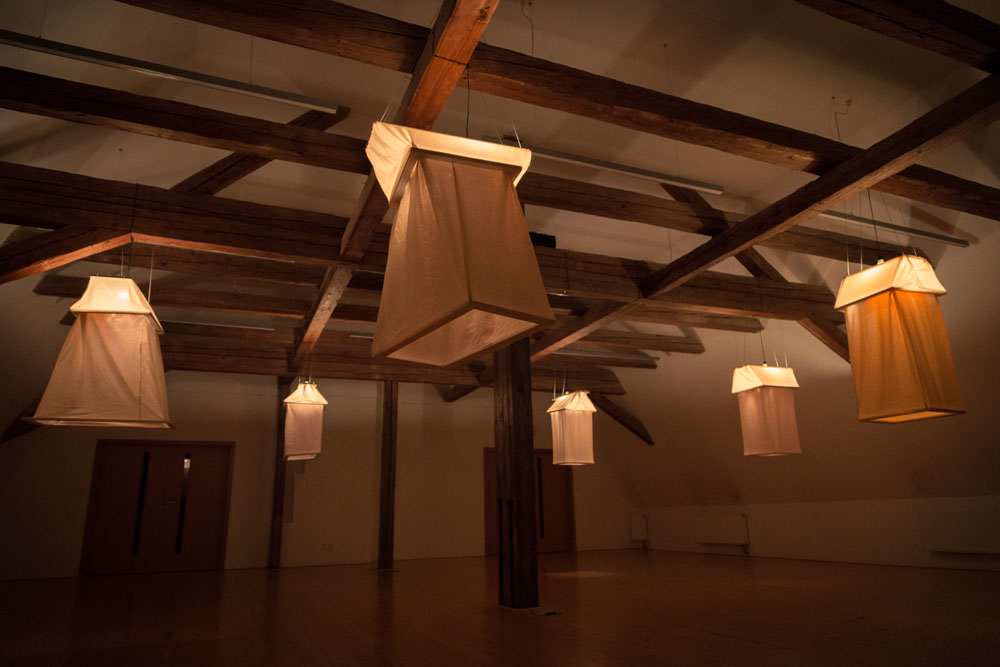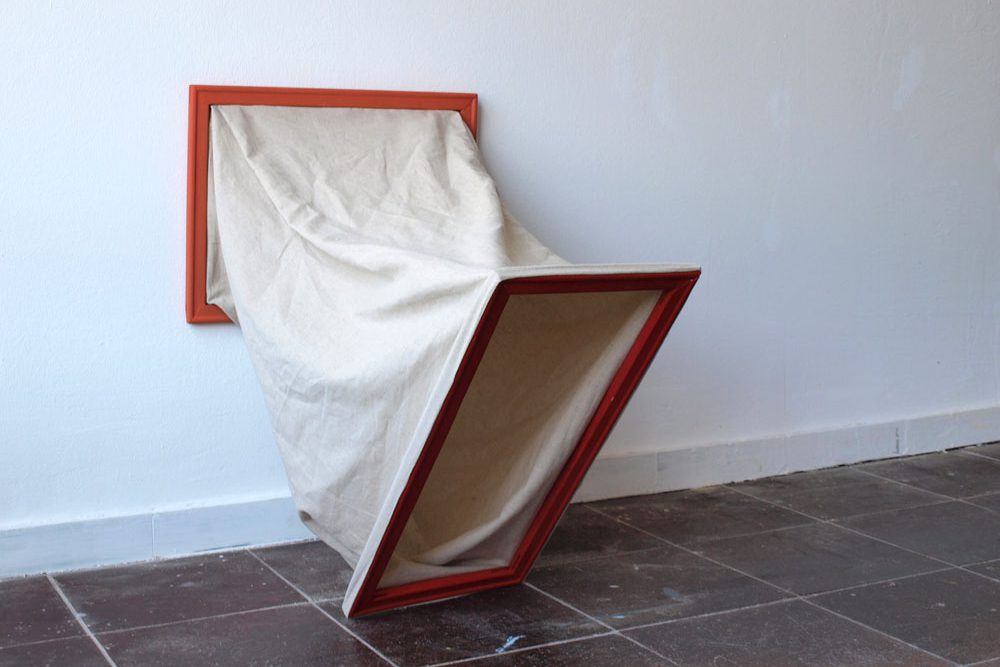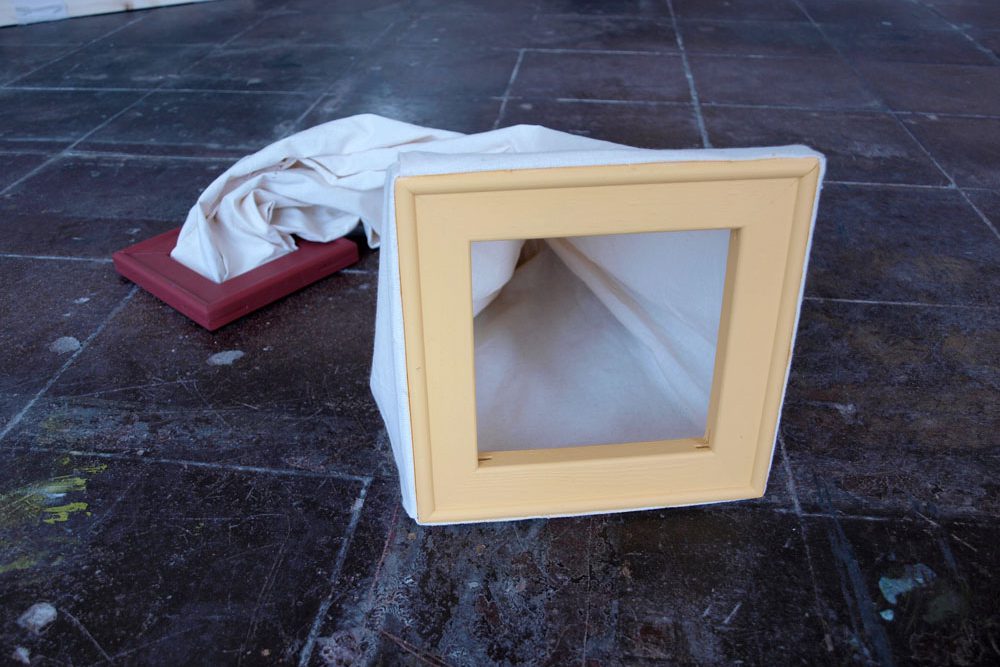Ornamental crime scene
Bamboo is a widely used material in many branches, but what about in art?
To let me explore this, my bamboo project was chosen as part of an Artist in Residency program at Treasure Hill Taipei Artist Village. The subject of my task was to explore possibilities and the relationship of bamboo processing not only in craft, but also in art.
How to pay a tribute to the craft and at the same time evaluate the usefulness of bamboo to a number of human cultures? After months of investigation into both the traditional and contemporary approach to bamboo, the site-specific exhibition “Ornamental crime scene” came to birth, aiming to use bamboo in contemporary art while not ignoring its original practical purpose.
Let the pattern talk!
My visit to the Nantou Bamboo Museum and stay at the National Taiwan Craft Research and Development Institute finally gave me the idea of creating this maze of ink paintings. There I was mesmerized by all the possibilities of woven pattern techniques for creating vessels or baskets in various styles. In contrast to other ways of container decoration, both the characteristic shape of the vessel and also the decoration depend on the pattern itself. This allows us to question the boundary between the body of the vessel and a simple aesthetic element of decoration. To create a certain twist, I painted these patterns on textile with Chinese ink, the final representation is magnified and transferred onto the flat surface.
If you want to create something new, you must go to the roots of the material itself and not infinitely refer to the history of processing, this is the main piece of advice I give to my students. In order to find the limits of bamboo processing, various segments of bamboo selected for the installation “levitate bamboo” were sawn up on these two conditions: each segment was to have the thinnest edge possible on the one side and the thickest on the other.
Via this method, I gained full access to the inside of the bamboo, symbolically exposing everything that hides in it. The final hanging installation works in tandem with its surroundings in the form of drawing the spectator’s attention to the tiling too. Therefore, the final presentation needs to be adapted for each space every time it will be reinstalled again.
However, it were the floral pattern on the tiles that were in the spotlight in the room with the mirror. How can one switch the focus from everything else to the ornaments direct under one’s feet? This is the question behind the mirror installation “Look down, moon is rising” pointing to the fact that the mere reflection is nothing more than a path to the source.
Tickle Sense 27.5 - 18.06.2023
AIR 03.04.-24.06.2023
Official video about "Tickle Sense" - artists and projects

The project was funded by the European Union
Let it Burn
pocelain vases, different sizes 2022/2023
My vases have layers, onions have layers. My vases are like onions.
As a child, I spent hours sitting in front of the display cabinet in the living room, to figure out the question where are the onions on the “Blue Onion Pattern” porcelain set. The display cabinet and its contents have some specific vibes. For my family, it is some kind of sacred space to adore with objects inside not to be touched or even be used under any circumstances. Despite the fact that the untouchable objects there were carefully designed to be used and touched, and not just be observed from a distance. While “Let it Burn” vases are inconvenient objects for everyday use, they were designed for speculation or meditation.
In order to achieve this, cobalt, which gives blue onion pattern its characteristic colour, was applied on sheets of paper that were then soaked into porcelain. Later, paper burned down in the process of firing, leaving behind many fragile layers of porcelain created by a variety of soaking and crumpling techniques. Thus, these onion-inspired sculptures emerged.
Siderity
movable and static objects, different sizes 2022
How satisfying it is to crumple up your failed work and throw it into the trash. These hordes of crumpled balls of our failed work, filled with aggression and frustration, form the foundations of our future success the fruits of which we like to enjoy. It is therefore easy to ask whether our whole world is not based on destruction, and whether it in fact is part of collective subconsciousness, the kind of root system from which all creative force stems. Isn’t it then a fundamental principle that moves the whole universe?
The objects called Siderits were made by covering the white surface of paper with several layers of graphite drawing that would build up to create a metal-like surface. In doing so, the paper underwent a substantial visual change from a soft and malleable paper to hard metal.
Using my hands and my body, I then deformed the paper into a crumpled paper ball.
For a festival called „Sonda“ (which is Probe in English) in a planetarium I used the properties of my Siderits to create an alien impact situation on site. My artworks there simulated pieces of ore or rock scattered around the room. In fact, siderite is a type of iron meteorite, an exploded core of a planet. Siderits were forced to leave their planet and also their planetary system to find a new home on Earth. That’s the story behind this installation, for this case I added a motor into the objects so they could lightly vibrate in a randomized interval. The audience wasn’t sure if the objects were organic or not.
The Group of Thoughtless
porcelain vases, screen prints 2021/2022
The Group of Thoughtless is a vase collection, each of which was created from a chocolate figure that I transformed into porcelain and I bit off each figures‘ head before firing.
The first bite of a chocolate figure attracts us most because we want to know for sure if there is some surprise inside, for example some tasty filling. By biting off the head of each figure, I damaged it, but at the same time we got access to the hollow inside, which in the form of a vase can have a specific function. This destructive act has thus given us something new - and perhaps even more useful?
Lost in the structure
drawing 200x100x10cm 2021
Will a drawing lose or gain some of its value if the paper becomes crumpled? Scribbling, doodling or even crumpling paper are emotionally soaked activities that somehow help us deal with our turbulent emotions. While the child’s scribbling is generally a sign of joy and creativity, in adults it is a behaviour which like the biting-off the heads of chocolate figures can be described as a kind of obsession. Scribbling and crumpling paper therefore breaks down some of the established mechanisms of out thinking.
And this protest against the established norm of not scribbling or crumpling serves precisely to weaken our stormy emotions. A heap of balls of crumpled paper that doesn’t mean anything to us anymore may remind us of the dissatisfaction with the quality of our work, and a cocoon of tissues or receipts in our trouser pocket reminds us of the fear or boredom we tried to overcome through calming crumpling.
In case of “Lost In The Structure”, which seems to look like a crumpled scribble, this destructive crumpling allowed the paper to bulge and so give it another physical dimension.
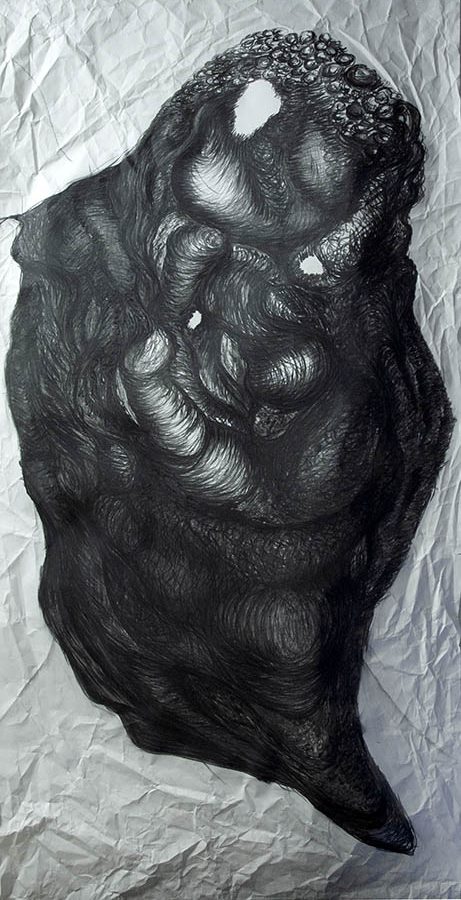

Be in touch
paper collage 2020/2021 180x100x15cm
Transformation through wringing, wrinkling and crumpling is further used in works called Be In Touch. Here, I have used the plasticity of silk paper to create clumps of different structures that are meant to not only visually but also haptically overload the viewer. The viewer shall be immersed in their own complexity.
Sediments Collection
2017- till now
I am sure you know this annoying scenario: You are packing a box and you happen to touch the sticky tape. Your fingerprint will stay there forever as a DNA stamp which says who packed the box.
Through contact with a sticky tape my hand leaves small particles of skin and cells on the surface, which creates an imprint. The same situation happens when I touch unshaved wood, for sure I will get a splinter. Probably my body will be infected when I inhale in an infected environment, and also when I exhale, my pathogens will be spread out into the environment again. Therefore, we are not at all separated from the surroundings and they are not separated from us. The same also applies to objects themselves. As Ruba Kathrib stated in her essay „Materials, Talking and Walking: Pakui Hardware“, this shared imprint and transformation of microscopic layers of material, i.e. when materials share the particles with each other and change into something new, marked the beginning of recording touch through a sticky tape and a graphite layer a.k.a. drawing. In case of my long-term project called Sediments, I tried to give the third dimension to two-dimensional drawings, based on the example of the Möbius strip.
The Möbius strip is a mathematical phenomenon where a two-dimensional surface becomes three-dimensional by bending itself, while it only consists of one face and one edge.
The aim of the Sediments was therefore to combine the thesis of Ruba Kathrib with a mathematical concept, on the basis of which the surface can be deformed into the third dimension. For this purpose, the drawing was imprinted on a tape and stretched using frames or constructions, which had the form of planes. Thanks to them, the drawing then took on its final shape.
Hausfraukunst
Drawings on thermosensitive paper 2019/2020
Upon contact with a hot pot, I will probably get burnt and the formed scar will remind me of this unpleasant situation until it disappears forever. Artworks called Hausfraukunst were created by touching and moving hot dishes over thermosensitive paper. The hallmark of thermosensitive paper is that the information recorded is not stabile, therefore the created stroke will fade out over time and in the end will disappear forever.
Drawings on thermosensitive paper are for me a metaphor of a Sisyphean cycle of housework. As soon as you finish, it begins again, said Ori Levin. She sees a parallel between housework and video in a gallery space, which plays over and over again in an endless loop. In case of these artworks, it is necessary to accept that compared to cleaning it is impossible to maintain the drawing in any way nor to preserve its original state.
Space Between
Paint, canvas, blind frames 2017/2018
How to finally reach the end of a dark corridor that we don't know where it goes? Fear that we must necessarily overcome before opening a door leading to the unknown. Into fantasy, another dimension or existing reality, or will we return back to the starting point? And is it even possible to return when in life we turn into a different person with each experience?
Artworks under the name “Space between” are based on a crawl tube, which is a typical piece of playground equipment. Black fabric attached to two rings on each end creating a tunnel to the unknown.
The tunnel could be narrow, curved, and if it got tangled up, also impassable. Even as a child, I was fascinated by exploring the world behind an imaginary wall or obstacle, which served as the primary inspiration for these works. For this reason, a combination of blind frames and canvas was chosen, but they were not used as is usual in painting. Here, the symbolic of a painting as a "window" into another reality becomes figuratively real and thus takes on another physical dimension.
How can we explore new opportunities if we don’t dare go through the dark tunnel?
